Rapid Deploy Use-Case: Ship-to-Shore WiFi
Rapid Deploy Use-Case:
Ship-to-Shore Wi-Fi
Outdoor rail and intermodal terminals present complex, ever-changing conditions when deploying and maintaining wireless network infrastructure. But marine terminals take those challenges to an entirely new level, exposing infrastructure to corrosive elements and raising the bar for wireless connectivity between massive shipping vessels and on-shore operations.
Even with these added difficulties, marine terminals still face pressure to keep shipped goods moving, on time, on track, and reliably delivered for both carriers and shippers. To meet these customer expectations and create an operational advantage in an increasingly competitive market, one shipping and logistics customer approached Buckeye Mountain about partnering on a unique ship-to-shore WiFi project that would provide consistent, seamless connectivity for a marine terminal and customer ships docked in its San Juan, Puerto Rico port.
“They had already tried cellular,” says Steve Hill, a consultant for Buckeye Mountain. “One provider put in cellular-based access points as a connectivity solution for its customers. But those failed miserably. After that, Buckeye Mountain was given the opportunity to deliver a solution.”
Steve Hill, Director Wireless Engineering
Read on to learn how Buckeye Mountain partnered with the marine terminal to design and launch a successful, innovative ship-to-shore WiFi solution.
The Problem: Ensuring consistent WiFi connectivity across a complicated marine environment
Marine terminal environments are always in motion: ships are moving in and out, cranes are loading and unloading containers, and container stacks create constant change to the terminal yard landscape.
These dynamics create significant challenges when planning and implementing wireless infrastructure. Reallocated container stacks can interrupt wireless signals, creating spots all over the yard where a lost connection can disrupt operations. Ships, meanwhile, can struggle to secure a reliable connection as they enter the port. Even when a signal does reach the ship, the connection may only be available in certain locations—and moving containers and cranes in the yard can disrupt that connection at any moment.
Initially, the customer—a shipping and logistics operator—tried to address these connectivity issues by installing cellular access points in its terminal crane offices in Puerto Rico. When that failed, they needed to quickly find and deploy an alternative connectivity solution.
“The terminal was using a lot of handheld devices to scan containers as they came off the ship,” says Hill. “Cellular wasn’t working. The handheld scanners kept dropping connections, which threw a wrench into the whole terminal’s operations. It wasn’t sustainable.”
Steve Hill, Director Wireless Engineering
During a site visit to evaluate the terminal environment, Buckeye Mountain’s experts identified a number of unique challenges to address through its solution design process, beginning with the unreliable power and wireless infrastructure in Puerto Rico—both of which had contributed to the failures of past connectivity solutions.
Meanwhile, the high temperatures and high salt content of the air created highly corrosive conditions that meant certain materials couldn’t be used when deploying wireless infrastructure.
“When you have multiple metals like stainless steel and aluminum and regular steel, if you don’t have the right metals connecting to the right metals, things corrode very, very quickly,” Hill says. “Within six months, something completely rusts off. Once we got there and we saw so much corrosion everywhere, we took some time to think it through.”
Delivering Short-term WiFi Connectivity and Lasting Infrastructure
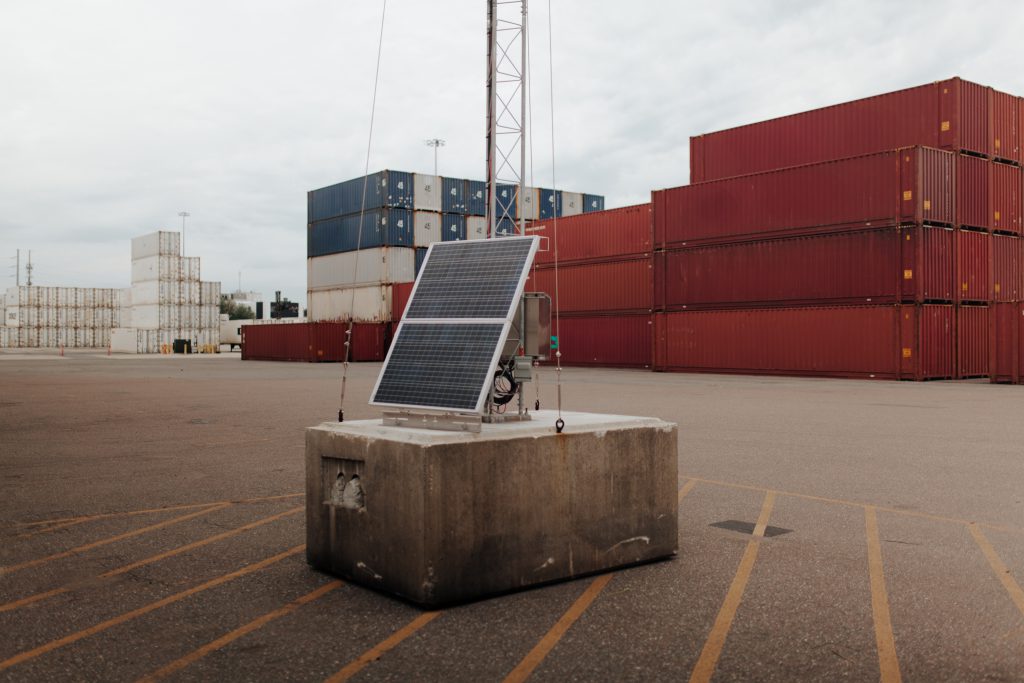
This customer needed a fast solution to its urgent connectivity challenges. That’s exactly what our on-the-ground experts delivered: Within 48 to 72 hours, Buckeye’s team had core connectivity equipment installed and up and running, implementing Rapid Deploy technology to deliver a stable WiFi network covering the dock and nearby areas.
“Most of that was Rapid MiniMaxes,” says Hill. “We identified vertical assets like poles—including some telephone poles that had been broken off from previous hurricanes—where we were able to install solar panels and other equipment. It was really an engineer-as-you-go kind of environment—but a lot of that initial network still stands today, six years later.”
While that initial 72-hour project addressed the customer’s most urgent connectivity needs, the shipping and logistics company still wanted to partner with Buckeye on more long-term initiatives to improve its port operations. The first phase of these connectivity projects focused on targeted solution delivery based on the customer’s evolving needs, including expansions to its WiFi coverage area and upgraded infrastructure that could support HD video surveillance.
Eventually, the customer shifted its focus toward planning connectivity investments that could support the company’s future needs in its Puerto Rico terminal. Those efforts included implementing 60 GHz technology that offered better short-range performance, consistency, and security within the terminal yard.
“Even though 60 GHz is designed for fixed point‑to‑point connectivity, we installed a test link to a moving crane to see what you could expect when a crane is moving 20 miles an hour,” says Hill. “But it performed really well.”
Soon after the infrastructure for 60 GHz spectrum was installed, the customer approached Buckeye Mountain about setting up wireless connectivity for a new PBAM trailer in its terminal yard. Although the customer had initially planned on using trenched fiber-optic cable to connect the PBAM trailer to the rest of the yard, the high cost of that infrastructure project prompted the customer to see if wireless connectivity was an option.
“The purpose of the PBAM trailer was to perform all of the remote diagnostics and monitoring for the yard’s three dock cranes, and to then relay that traffic back to the manufacturer’s headquarters,” Hill says. “For that reason, the trailer needed very reliable, low-latency, high-speed connectivity.”
Buckeye turned to its new 60 GHz spectrum, installing 60 GHz radios that created direct paths to the marine operations building and terminal cranes. Those connections now form the backbone of a 7 Gbps ring around the port, replacing a slower and less secure 5 GHz backhaul.
“The air‑fiber ring is far more reliable and less vulnerable than buried fiber,” says Hill. “Unlike fiber cable, you can’t ‘cut’ the air.”
Reliable Ship-to-Shore WiFi, Built on a Carrier-Grade Backhaul Network
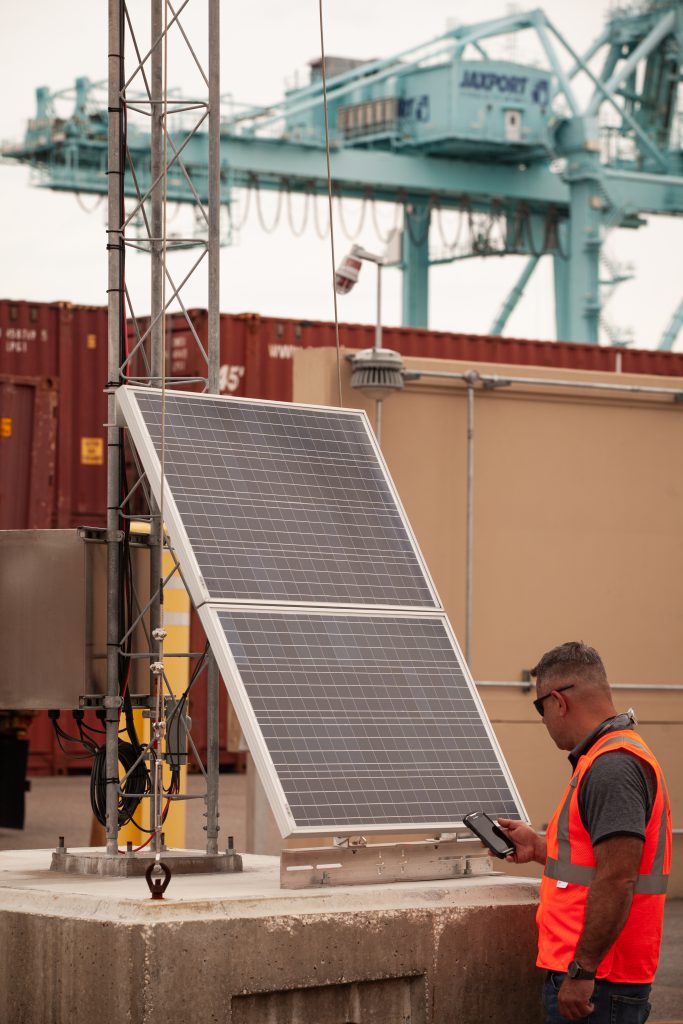
Buckeye Mountain’s value as a wireless connectivity provider is about much more than the technologies we implement. We also bring a proven methodology to up-front planning and solution design, leveraging path-loss calculations, interference studies, and site modeling to inform our site visits and ensure we’re set up to engineer an effective solution for our customers.
We take pride in offering a deep engineering bench of experts offering certified credentials and experience using top-tier predictive tools. As a result, we were able to provide this customer with accurate forecasting of the increased connection uptime and terminal throughput they could expect from our infrastructure deployment.
In the case of its Puerto Rico marine terminal, Buckeye Mountain guaranteed the customer “five nines” reliability—or 99.999 percent uptime.
“That equates to just a few minutes of allowable downtime per year, including things like software upgrades and equipment failures,” Hill says. “‘Five nines’ is considered the gold standard in reliability. It’s typically associated with carrier-grade, fiber-based networks. That’s the level of performance we’re aiming for when we design our networks.”
Steve Hill, Director Wireless Engineering
In any infrastructure delivery project, Buckeye Mountain’s default goal is creating multi-path, multi-radio redundancy across the network, ensuring uptime even when the facility suffers from equipment failures, environmental disturbances, or even extreme scenarios like lightning strikes and severe weather.
From an engineering and design perspective, uptime and throughput always come first,” says Hill. “Cost is a secondary consideration. If a customer pushes back on pricing, we explain why the network is designed the way it is—and what risks come with cutting corners.”
Hill also notes that many of Buckeye’s hardware solutions are patented or patent-pending, meaning their customers have exclusive access to innovative technologies. Buckeye’s relationship with other hardware manufacturers also provides an inside edge: in the case of this Puerto Rico terminal, Buckeye’s experts had early access to emerging 60 GHz solutions that allowed the customer to plan around these solutions and deploy them as soon as they were available – resulting in cutting-edge infrastructure that only Buckeye could provide.
As Your Connectivity Needs Evolve, You Can Count on Buckeye Mountain
Wireless technology is changing all the time. So are the connectivity needs of marine, rail, and intermodal terminals.
Your on-the-ground operations need wireless infrastructure that is fast, reliable, and flexible to change. That’s exactly what Buckeye Mountain offers—and it’s why we view each customer relationship as a long-term partnership built on trust, credibility, and service.
We’re invested in supporting your company’s success not only today, but years into the future. Whether you’re seeking immediate connectivity help, long-term infrastructure transformation, or both, we want to be your partner in navigating that change and maximizing performance across your yard.
Find out how Buckeye Mountain can design and deliver a custom solution to meet your most specialized connectivity needs.
Aligning Your Terminal’s Long-Term Strategic Goals with Daily Operations
Aligning Your Terminal’s Long-Term Strategic Goals with Daily Operations
For leaders at busy rail terminals, the resource requirements to keep operations moving often take priority over long-term strategic planning.
It’s easy to see why. With shipments coming and going, and inventory moving constantly —not to mention endless maintenance and repair tasks to keep equipment and infrastructure up and running—the big-picture thinking involved in strategic planning can seem irrelevant to the real work getting done on the ground.
Sticking to the status quo may not be a perfect strategy, but it gets the job done.
“Historically, the challenge has been, ‘Why fix something if it’s not broken?’” says David Fajardo, Manager of Field Technical Services at Buckeye Mountain.
But there’s a difference between “getting the job done” and “doing the job better than before.” Terminal operations may not be broken, but there’s plenty of room for improvement in rail yards and marine terminals that aren’t yet leaning on digital innovation to address pervasive issues affecting day-to-day performance.
Therein lies the importance of making space for long-term planning: While you may not see the impact of strategic thinking immediately, it can transform your operational capabilities in the near future. Successful, sustainable terminal operations require leadership to balance day-to-day responsibilities with strategy planning that is both achievable and impactful.
Think of it this way: If you continue to prioritize short-term needs over long-term goal-setting, you can expect those operational challenges to compound over time.
But striking a balance between today’s needs and tomorrow’s goals is easier said than done. That’s why we’ve created this guide to help you keep daily ops running while building toward an even more successful future.
The Operational Challenges Faced by Today’s Terminal Leaders
Operational innovation doesn’t happen overnight. It can take years to see the benefits of the strategic changes you implement tomorrow.
That long timeline underscores the importance of planning ahead. Effective digital transformation in the yard needs to be informed by the persistent challenges and limitations affecting terminal ops performance.
While every terminal is a unique environment, the operational challenges of these rail yards are often consistent from one location to the next. Here are some of the most common pain points familiar to today’s terminal leaders:
Achieving Buy-in for Strategic Initiatives Among Terminal Workers
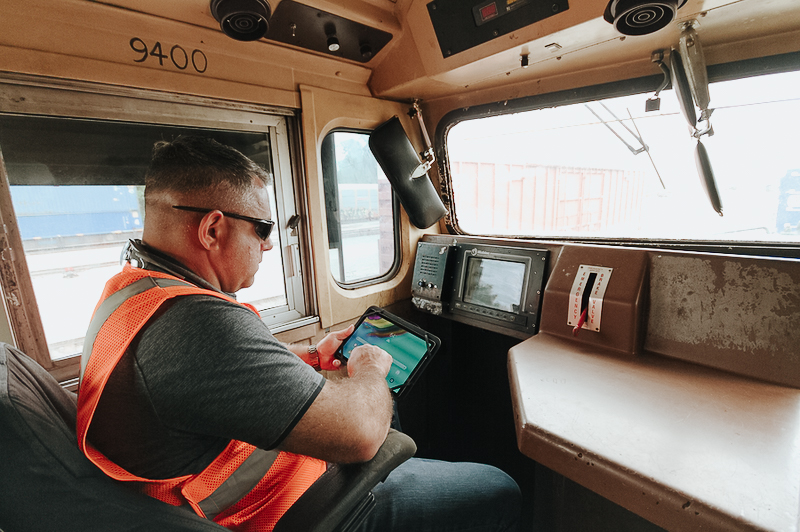
Any terminal’s operations workforce is going to display a wide range of reactions toward the prospect of digital transformation.
Some team members will immediately see the value of getting trained on new devices and software designed to help them do their jobs better. Others will need to have the benefits of this strategic shift shown to them—including its implications for their work responsibilities and the training and upskilling they will be asked to complete.
Even then, some workers may still be hesitant to embrace change—especially if a new strategic initiative is pushing them out of their comfort zone and disrupting work routines they have relied on for years.
Terminal leaders must understand that some operations personnel will need time to accept these changes. Proper education and training are some of the best ways to ensure that your workers can properly use this technology—and will, in turn, be able to experience the benefits first-hand.
“A lot of examples of automation in the terminal can make work much easier for your personnel,” says Fajardo. “A good example is one rail terminal where ops teams are operating cranes remotely from inside a building. Instead of climbing up a crane in the middle of winter with subzero wind chills, workers can now sit in a warm office while operating the crane. It’s a significant improvement for them.”
David Fajardo, Manager of Field Technical Services at Buckeye Mountain
Failing to Maximize the Value of Third-party Training and Support
If the terminal has attempted to control costs by limiting its investment into training and in-house support, it risks a number of complications that will increase operating costs, reduce productivity, and reinforce skepticism and resistance among your employees.
Improper use of devices, increased rates of device damage, and ongoing disruptions across the rail yard all increase the overall cost of your technology investments. While terminal leaders tend to view outsourced vendor support as another line item, it can actually help reduce costs in the long run while accelerating time-to-value and the long-term ROI of your new technology.
“There’s also the issue of competition in the vendor market,” says Fajardo. “Some leadership believe they can find cheaper vendor support options elsewhere. But what sets Buckeye Mountain apart is that we offer more than a device—we offer a complete package, including the devices and the ongoing support, to give our clients peace of mind that they’ll get the most out of their technology.”
Overcoming the Constraints of Workforce Attrition
Manual terminal operations are highly dependent on the institutional knowledge offered by an experienced workforce. But today’s rail yards are facing an increase in employee attrition, particularly among more experienced technicians and employees whose expertise is impossible to replace.
New hires may be able to fill those roles, but they’re unable to supply the specialized knowledge being lost through accelerating turnover. As a result, organizations reliant on manual operations bear the cost and inefficiency of onboarding new hires who require additional training but still can’t contribute the value of their predecessors.
A tech-enabled approach, by contrast, eliminates reliance on innate industry knowledge by equipping workers with specialized tools to perform or automate even specialized tasks.
Ensuring Smooth Daily Operations at Scale
At any given moment, terminal operations teams are juggling dozens of different shipments, tasks, and other priorities. A single oversight or delay can cause a chain reaction sending a ripple of disruption through the yard.
“A lot of rail terminals, for example, have these high-priority trains called ‘Z trains’ that need to depart ASAP,” says Fajardo. “These Z train operators are a big customer for a lot of railroads, and they pay a premium to get their trains loaded and out of the terminal.”
Beyond these high-priority tasks, though, operations teams and terminal management are constantly performing triage to assess new issues and demands placed on their facility, and to determine how resources should be reallocated as a result. Managing all these moving parts was never easy with pen and paper, but the increased volume and demand placed in rail terminals has made manual ops management unfeasible and unsustainable.
Automation and other tech-enabled efficiencies are critical to keeping the rail yard from spiraling into a chaotic mess spawning unnecessary errors, delays, and customer complaints.
The Strategic Goals Driving Terminal Leaders’ Long-term Planning
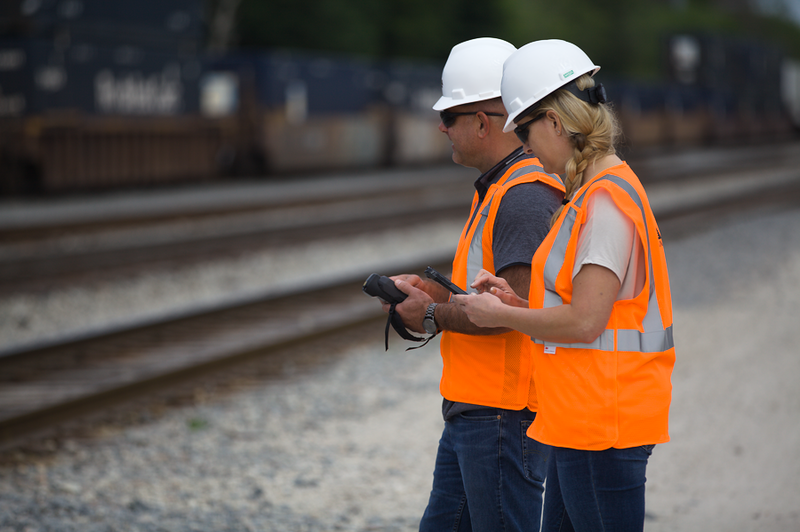
Terminal leadership is well aware of the cost, disruption, and frustration that comes with unsuccessful tech adoption in the rail yard. As a result, many approach strategic planning for future tech adoption by seeking out changes that will deliver the greatest positive impact for the terminal.
The end goal of tech adoption for terminal operations is to help those facilities run smarter and more efficiently—allowing the yard to increase productivity while reducing errors and related operational downtime.
Here are two specific strategic outcomes those leaders are often seeking:
Accelerating Operations through Automation
While digital tools and automation have transformed day-to-day operations across the supply chain industry, rail terminals have been a rare exception.
But it’s not that effective digital tools don’t exist. Instead, terminals continue to rely on manual, pen-and-paper processes because they’re familiar to workers and sufficient to keep operations moving.
Rather than endure the short-term inconvenience of transitioning to new technology that helps operations run more smoothly and efficiently, it’s all too common for terminal ops personnel to stick with a status quo that is inefficient, error-prone, and quickly becoming obsolete.
“Pen-and-paper processes naturally come with a degree of human error, among other limitations,” says Fajardo. “Transitioning to a more technology-driven environment can address these issues by improving efficiency, reducing mistakes, and increasing visibility.”
David Fajardo, Manager of Field Technical Services at Buckeye Mountain
Terminal leaders are well aware of the complex daily operations that must be managed across a single yard. Each process that is executed manually, rather than with the help of digital tools and automation, represents wasted time and an increased risk of error.
When you multiply this inefficiency across every manual task performed across your yard, your day-to-day operations will inevitably suffer from work delays, workflow bottlenecks, lower productivity, and reduced revenue potential.
Improving Visibility for all Terminal Operations
These companies want better visibility into what’s happening at the terminal level. But reliable data on what’s happening on the ground is difficult to gather when most of your terminal operations are being handled with pen and paper or outdated systems.
Even when that information is able to be collected, it takes time for manual information to be consolidated, organized, and delivered to key stakeholders. The long timeline for manual reporting means that by the time information on terminal operations is delivered to corporate leaders located hundreds of miles away, the data is already outdated.
These visibility challenges disappear in a tech-enabled terminal. The data available from endpoint devices and other terminal technology can inform a 360-degree view of daily operations. Information can be gathered and analyzed quickly—potentially in real-time—to support more responsive, effective management.
Over time, this data can power faster, more effective process optimization while helping terminal leaders identify new automation opportunities across daily ops.
Connecting the Dots: Aligning Long-term Strategic Goals with Boots-on-the-Ground Operations
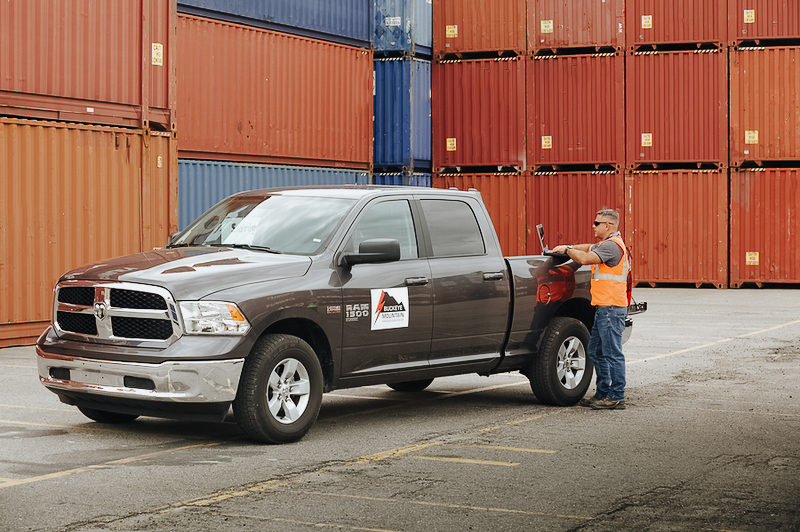
Day-to-day operational requirements are easy to define and straightforward to execute: technicians are deployed to address equipment needs, shipping containers are unloaded from an incoming ship or train, and assets are evaluated to ensure regulatory compliance.
As for long-term strategic planning? If you’re starting from scratch, a clean slate can be overwhelming. That’s why terminal leaders should start any strategy development process by identifying long-term goals that offer a clear benefit to your boots-on-the-ground operations.
By connecting these goals to their tangible impact in the rail yard, all stakeholders can approach strategic planning with a more tangible understanding of how these long-term changes will positively impact daily terminal ops.
Here’s how to achieve this:
1. Implement TechOps
After years of a slower tech adoption, the industry is now catching up. As a result, today’s terminals “are getting ‘tech-ified’ faster than their operations personnel can support them,” according to Ryan Swartz, Director, General Intermodal Innovation at Buckeye Mountain.
This fast rate of transformation is a potential risk to day-to-day operations, putting strategic initiatives at odds with the immediate needs of rail yards and their customers. Terminal leaders are often caught in the middle: while they may feel pressure to keep pace with the rapid innovation taking place at other rail yards, they may still be stinging from past tech adoptions gone wrong and may be wary of disruptive technological change being driven by strategic initiatives.
This friction between today’s needs and tomorrow’s ambitions is exactly why terminals need the support of a tech ops vendor. With remote support and a boots-on-the-ground presence for maintenance and other support, a tech ops partner can deliver the following operational impact:
- Complete freedom to acquire best-fit solutions. An ideal technology vendor is hardware agnostic, so you aren’t locked into choosing solutions from a limited list of hardware the vendor supports.
- 360-degree visibility across terminal operations. By consolidating hardware support with a single vendor, terminal leaders can easily manage resource allocation, streamline workflows, and coordinate support activities across the yard.
- Optimized asset utilization. At Buckeye we can expedite repairs, execute preventative maintenance, and proactively replace devices at the end of their lifespan to maximize equipment uptime and minimize disruptions to your operations.
- Enhanced efficiency across your operations workforce. Technicians and other personnel are equipped with the right tools and resources to do their jobs faster and better. Rates of human error are reduced, and daily operations become more productive thanks to streamlined, efficient workflows.
- The ability to adapt and scale your vendor support over time. As the role of technology in your terminal increases, a hardware-agnostic technology partner can scale with your support needs, providing a foundational relationship that will be there when you realize your long-term ambitions.
2. Invest in Full Lifecycle Management
The long-term value of your technology investments will be heavily influenced by how well you manage those devices over their lifecycles. It starts with making sure you’re choosing the best fit-for-purpose solutions for your yards and then securing the necessary support to maximize the lifespans and value of that technology.
But asset lifecycle management is both cost- and resource-intensive. As a result, too many terminal leaders try to get by without it—and end up suffering the results of that short-sighted decision.
One Class I railroad learned the hard way when it acquired 4,000 lower-cost Android tablets for train and engine employees across its rail network, only to realize that the devices were creating constant work disruptions that wouldn’t have existed with more expensive iPad tablets.
“It’s very hard to stay ahead of what actions need to be taken to keep operations running efficiently and evolving,” says Erica Toney, Southeast Operations Manager at Buckeye Mountain. “Devices, for example, all reach a point where their operating systems aren’t able to be upgraded, or where operational apps stop communicating with the operating system. These things can impact operations, but Buckeye really thrives in our ability to look to the future and stay ahead of those needs while maintaining operational success in the present.”
Erica Toney, Southeast Operations Manager at Buckeye Mountain
By offering cradle-to-grave management across the entire asset lifecycle, Buckeye Mountain helps you maximize the value of your technology every step of the way.
We help you procure the best-fit technologies for your operational needs and manage those investments from installation to their eventual replacement. And because we’re experts in lifecycle management, we’re able to anticipate and address potential issues with your technology before they disrupt terminal operations.
3. Consider Third-party Support and Training
An optimized approach to boots-on-the-ground operations starts with the right technology. But realizing this strategic vision requires more than picking out specialized hardware and software.
Employees need to be properly trained to use these solutions. Ongoing support will be necessary to troubleshoot issues and manage technology lifecycles.
Given the high up-front expense of new technology, terminal operators may prefer the reduced cost of a DIY approach. But handling all of this in-house can be incredibly risky to your strategic investments—and it can create additional work for technicians and other personnel at a time when they’re already stretched thin.
Ongoing third-party vendor support can help you minimize these risks, overcome common pitfalls in navigating digital transformation, and help your terminal achieve its long-term strategic goals—without compromising performance or continuity for your day-to-day operations.
How Buckeye can help with your Long-term Goals and Daily Operations
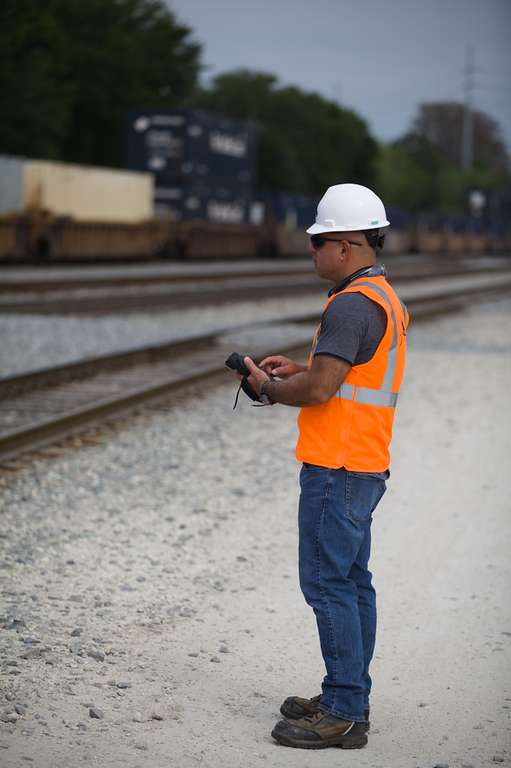
Every terminal has unique needs and goals guiding its technology investments. That’s why Buckeye Mountain tailors its technology implementations and ongoing support to each facility’s needs.
Whether you need tablets for on-site technicians and operations personnel, interactive self-service kiosks for incoming drivers, automated gate systems, rail portals, or any other technology designed for deployment in rugged terminal environments, we help supply, configure, install, and support those devices to make sure your investment is paying dividends for your daily operations.
“A lot of what we provide revolves around implementation,” says Fajardo. “Many of our terminals start with nothing—no gates, no portals, no technology in their trucks or cranes. We handle everything from start to finish. In many ways, we function as a turnkey solution and support desk for them. Without our involvement, they wouldn’t have been able to achieve the level of optimization they have today.”
Partner with Buckeye to Minimize Disruption to Your Yard
Outside vendor support ensures that all of your existing internal resources are available to support continuity in the yard. But Buckeye Mountain understands that long-term strategy execution can’t come at the expense of daily operations and your customers’ needs.
That’s why our services and support are designed to maximize equipment availability and minimize disruptions in your yard. We do this by managing everything remotely to stay physically out of terminal workers’ way. We also implement failovers to keep operations insulated from disruptions caused by severe storms or other unexpected events.
“We understand that outside the day-to-day hardware support involved in lifecycle management, there are mission-critical scenarios where operational continuity is non-negotiable,” says Toney.
From cradle to grave, we don’t only supply the technology you need to realize your strategic goals. We manage the full lifecycle to make sure you’re getting the results you expect.
The Right Technology Partner for Today and Tomorrow
Terminals are ready to boldly embrace innovation and digital change. But they can’t do it alone.
As companies struggle with attrition and the slow bleed of in-house expertise, Buckeye Mountain offers a team of industry veterans bringing critical knowledge and a knack for finding the right solutions for our customers.
We’ve built our reputation as a trusted partner solving tricky problems for our customers since day one. Looking further into 2025, we’re even better positioned to deliver solutions and support that keep our customers ahead of the technological curve.
Give your daily operations the tools it needs to succeed—and give your long-term strategy the support it needs to realize its full potential.
At Buckeye Mountain, we’ll help you do both.
Investing in Rugged Hand-held Devices: The Value of ‘The Buckeye Difference’
Investing in Rugged Hand-held Devices:
The Value of ‘The Buckeye Difference’
Terminal operation teams do their best work when they have the right tools for the job. As technology becomes more deeply integrated into intermodal, rail, and port environments, field technicians and other personnel are increasingly reliant on mobile devices in their day-to-day activities.
Anyone who has spent any time in the yard knows that terminal operators can’t simply buy tablets off the shelf at their nearest electronics retailer. From network compatibility to durability to required functionality, mobile device purchases must meet a long list of requirements.
So when your field team needs new devices, what’s the best path forward?
“It’s all about finding the right solutions for your specific use case, and Buckeye Mountain are experts in distilling those requirements and only giving you the technology that will fit in that space.”
Matt Hunter, Principal of Sales and Operations
While traditional device procurement partners want to sell you on a particular device or brand, Buckeye Mountain’s experts search through hundreds of hand-held devices to find the best-fit solutions for your needs. That customer-centric approach is how we make sure your business invests in technology that offers the best short- and long-term value to their operations.
The Industry-specific Challenges of Mobile Connectivity
The up-front purchase of hand-held equipment is just one expense to keep in mind when considering the long-term cost of these devices. Industry-specific challenges affecting device availability, longevity, and performance within your terminal yard can all affect the total cost of ownership for your devices—and they need to be accounted for when choosing appropriate hand-helds for your use case.
These challenges include:
Cellular and Broadband Compatibility
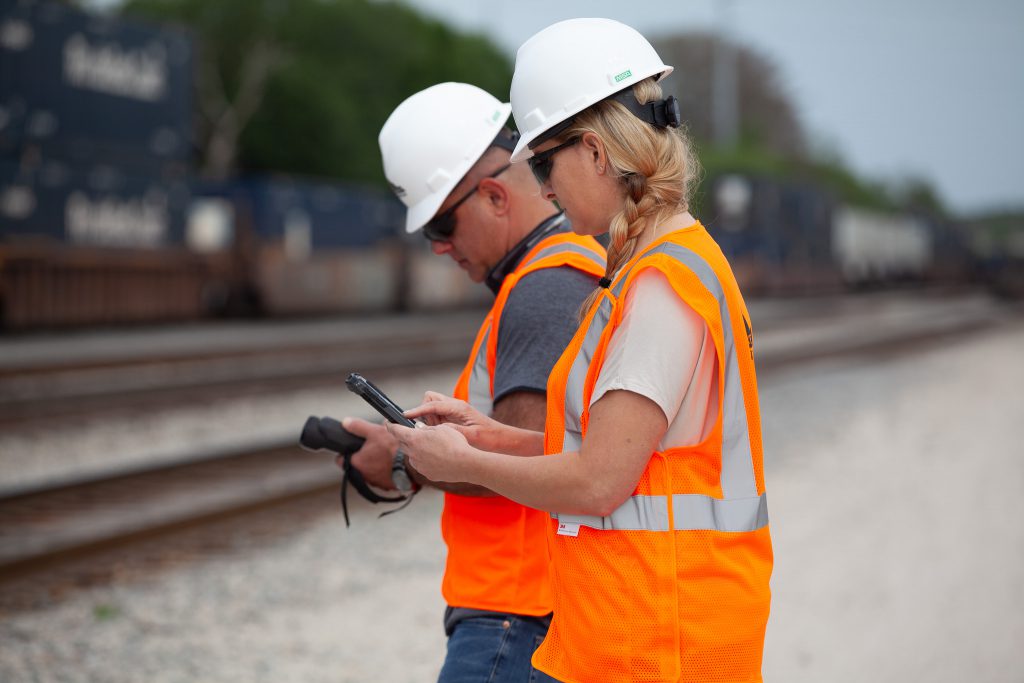
Certain terminal environments use cellular and broadband networking that isn’t universally compatible with all tablets and handheld devices. Older, more affordable tablets and hand-helds, for example, may not be compatible with 5G wireless frequencies, which some terminals may require.
Many terminals connected to the FirstNet public safety broadband network may also want all newly acquired mobile devices to be FirstNet compatible, further reducing the available inventory that meets the facility’s requirements. When this compatibility is non-negotiable, Buckeye Mountain’s experts simplify the procurement process by automatically weeding out any devices that don’t fit the bill.
Excessive Repair and Maintenance Costs
Extreme weather, heavy machinery and the rigors of outdoor industrial environments all increase the need for ongoing device repair and maintenance. But investments into rugged devices designed to withstand this regular wear and tear can reduce repair and maintenance costs, extending device lifespans and reducing the total cost of ownership for your hardware.
On-going Device Management
Optimal hand-held performance is dependent on continual device management to implement software updates, monitor device health, and troubleshoot issues that may arise. Remote device management can be instrumental in minimizing disruptions to terminal operations, allowing certain management activities to be executed without removing devices from the field.
Device Downtime
When mobile devices are integral to terminal operations, unplanned device downtime can slow or completely halt certain field operations. These disruptions can have a ripple effect across your terminal, creating bottlenecks and other slowdowns that reduce throughput and frustrate your customers.
Failure to deploy rugged hand-held devices across your field operations only increases the risk of incidents that result in unplanned downtime—resulting in material costs that extend far beyond the repair or replacement of that device.
Five ways the ‘Buckeye Difference’ Differs from Traditional Device Procurement

When terminal leaders approach device manufacturers in search of new hand-held solutions, most of those manufacturers will quickly recommend certain products they’re trying to sell—regardless of whether those devices are a good fit for the customer’s needs. As a result, terminals risk procuring mobile devices that aren’t suited to their outdoor environment, intended use case, or other requirements.
But Buckeye Mountain isn’t trying to sell your terminal products we’ve already manufactured. Instead, our experts are solely focused on making sure you invest in hand-held devices that are best suited to your terminal’s unique needs.
“We’re not going to try to fit a round object into a square hole, as so many manufacturers do,” says Hunter. “It doesn’t matter if the right technology comes from Panasonic, Honeywell, Zebra, or a different manufacturer. We cast a wide net to find the technology that fits.”
Matt Hunter, Principal of Sales and Operations
Here are five key ways Buckeye’s approach differs from traditional device procurement:
1. Tailoring solutions to specific use cases
Tablets and other hand-held devices are used across a wide range of terminal operations, including intermodal check-in, interactive kiosks, and mobile data units. Different terminals must also account for environmental factors such as wireless networking compatibility, extreme temperatures, heavy rain, and other outdoor conditions.
Rugged mobile devices are available to serve all of these specialized needs—and Buckeye Mountain’s experts have the industry expertise needed to ensure a successful deployment.
“Customers approach us all the time saying, ‘This is what we’re trying to do,’ says Hunter. “They might be trying to solve a problem at their gates, or they need a kiosk where the drivers can interact. And we’re able to say, ‘Oh, we just set this up for a different terminal. We’ve already solved your problem—here’s what it looks like.’”
Matt Hunter, Principal of Sales and Operations
2. Investing in Best-of-Breed Tech
Terminal operations run better when environments are built from a best-of-breed approach, ensuring that specialized use cases are supported by the best-fit specialized solutions on the market.
But for terminals managing technology procurement in-house, a best-of-breed approach is also far more resource-intensive. Each new technology acquisition can involve narrowing a field of hundreds of potential devices to a single, best-fit solution.
Buckeye Mountain’s experts have dealt with devices from more than 450 different manufacturers over the years—and that deep industry knowledge allows them to quickly identify the mobile devices best suited to a customer’s specific use case.
“For example, when a customer says they want to look at best-of-breed hand-helds that are 5G and FirstNet compatible, we find the devices that meet those requirements and toss out the rest,” says Hunter. “We use our expertise to make things simple for the customer. Otherwise, they’re going to get overwhelmed.”
3. Providing Comprehensive Device Management and Support
Buckeye Mountain’s commitment to customer success spans the full mobile device lifecycle. After we’ve helped you identify and deploy the best-fit mobile solutions for your terminal, we provide ongoing remote device management and support to optimize device performance, assist in troubleshooting, and minimize device downtime that can disrupt your operations.
Our continued support is designed to maximize the overall return on your mobile device investment through improved operational performance and extended device lifespans. We don’t measure success by the number of devices sold—we measure it by the value we deliver for your terminal.
4. A Strategic Framework to Maximize the Value of your Device Investment
Any investment into rugged hand-held devices should be supported by a strategic framework that clearly defines the intended business outcomes, lifecycle support strategies, and long-term value generation associated with that technology acquisition.
Procurement teams and field operations leaders must work together to ensure alignment on these goals and agree on the best approach for managing implementation and ongoing support for those assets.
This strategic planning is central to what Buckeye Mountain offers your terminal. Instead of selling your hardware without any ongoing partnership and support, we work with each terminal’s operations and IT professionals to set up plans and procedures concerning preventative maintenance, tech support, planned downtime, and other scenarios each facility will encounter across the lifespan of your hand-held devices.
5. Unrivaled Asset Management Expertise
Poor, inconsistent asset management practices can increase the occurrence of preventable repairs, resulting in more frequent operational delays and reduced device lifespans. For product manufacturers, lackluster asset management creates an opportunity to sell a new generation of hand-held devices to your terminal.
But because Buckeye Mountain prioritizes long-term value creation, we offer “boots-on-the-ground” support for asset management that controls your ongoing device management costs and maximizes your ROI across the full device lifecycle.
“Customers who move away from our ‘boots-on-the-ground’ approach quickly realize they lose a lot of asset management expertise that Buckeye Mountain brings to the table. We do things beyond scope to ensure our customers are taken care of—and we have an internal structure for managing assets that other companies can’t match.”
David Fajardo, Manager of Field Technical Services
Don’t buy Mobile Devices: Invest in Long-term Value Creation

Vendors that push certain hand-held devices and brands aren’t acting in your terminal’s best interest. You need a procurement partner you can trust—an expert hardware vendor who uses your unique requirements and goals to single out the best-fit solutions for your specific use case.
That’s what Buckeye Mountain does for its customers. We’re willing to comb through hundreds of different hand-held device options in search of the technology that offers exactly what your terminal needs—and then we continue to add value through ongoing support across the full device lifecycle.
We use our expertise to make the procurement process easier for your business, ensuring that your mobile device purchase is an investment that’s going to pay dividends for your on-the-ground operations.
See for yourself how Buckeye Mountain can streamline procurement and elevate business outcomes for all of your technology acquisitions.
The Connectivity Benefits of Rapid Deploy for Ports
The Connectivity Benefits of Rapid Deploy for Ports
Marine port environments need strong, consistent wireless connectivity to power their day-to-day operations.
Unfortunately, that urgent need is why so many terminal operators are frustrated with their current network infrastructure. Whether they’ve tried LTE, private LTE, or other Wi-Fi implementations, many of these environments have been forced to rely on wireless connectivity solutions that impose stark limitations on day-to-day operations.
After getting burned with ineffective Wi-Fi implementations in the past, many marine terminals have concluded that LTE and private LTE are the best available solution to their connectivity issues.
That’s why we’re eager to spread the word about our Rapid Deploy family of products, including Rapid Sky, which deliver wired and wireless connectivity customized to your terminal’s specific geography and unique connectivity requirements.
“If you need to set up an office space within your facility, for example, our infrastructure can provide gigabit connectivity almost anywhere, and at a minimal cost. In contrast, cellular solutions are restrictive: you’re limited by modem options, the expense of adding new SIM cards, and the inability to deliver comparable bandwidth or capacity. Our solution is not only more agile but also offers far greater capability and flexibility.”
James Crooks, Senior Solutions Architect at Buckeye Mountain
Read on to learn more about the connectivity challenges faced by today’s marine ports—and how Buckeye Mountain’s Rapid Deploy products can deliver a positive impact for your port operations.
The Current Options for Wi-Fi Connectivity in Ports
In recent years, marine terminals have made significant investments into mobile technologies that improve communication and streamline operations across the port.
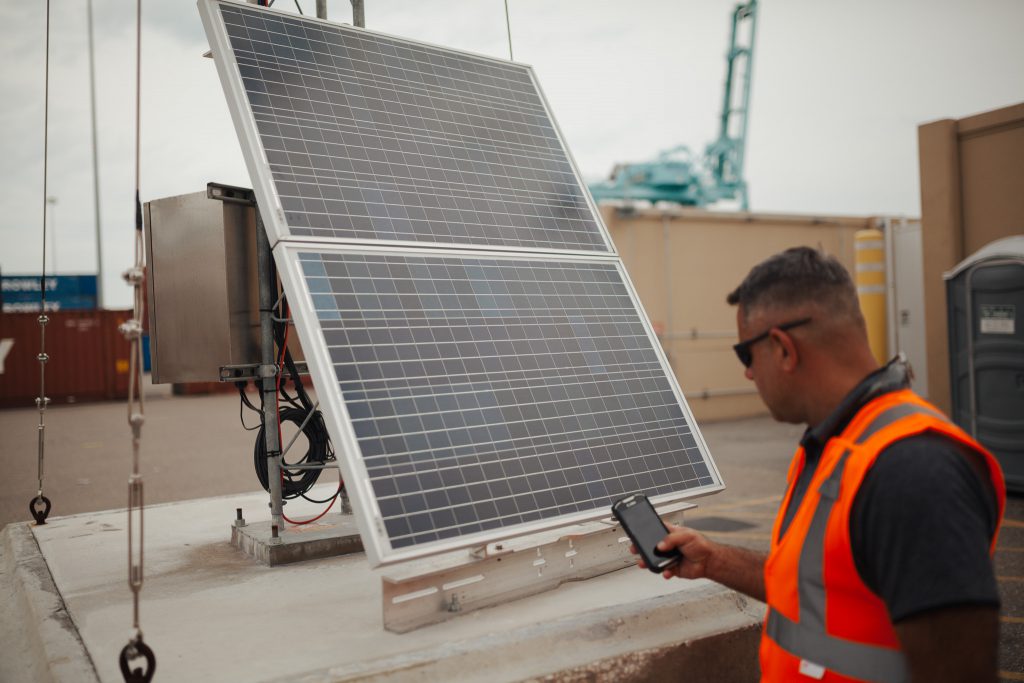
Tablet devices and other Wi-Fi enabled terminal hardware now play an integral role in almost every aspect of field operations—which means your entire terminal ops footprint can now be disrupted by connectivity issues.
“If the users who are on the ground can’t effectively communicate with an application that’s moving data or transactions, for example, it puts a port dead in the water until we get the issue resolved,” says Crooks.
Regardless of whether marine terminals are reliant on LTE or existing Wi-Fi infrastructure to deliver wireless connectivity, they’re likely dealing with these issues on a constant basis. Each takes a different approach to delivering port connectivity—but the end result is often the same.
LTE carriers
Both LTE and private LTE carriers deliver wireless connectivity using the same network infrastructure used for wireless consumers. Many marine terminals have been using LTE carriers for years because of its accessibility and ease of deployment: unlike Wi-Fi solutions, LTE doesn’t require any equipment installation, and it can still offer decent speeds and connectivity relative to other options.
The limitations of LTE come into play when relying on this technology to support mission-critical operations. The bandwidth limitations of LTE often can’t meet the throughput requirements of a large marine terminal. Large uploads and data transfers can be slow to execute through an LTE carrier—and these delays can create or exacerbate operational inefficiencies that wireless connectivity was meant to address.
There’s also the issue of signal availability in a port environment with tall stacks of shipping containers. If wireless devices are in a position where cellular signals are blocked by containers or other obstacles, wireless connections may be impeded or lost.
Wi-Fi
Compared to the bandwidth limitations of LTE, Wi-Fi’s greatest strength is its ability to deliver excellent bandwidth, throughput, and availability in a port environment. Unlike LTE and private LTE, where ports are dependent on shared infrastructure they don’t own or control, Wi-Fi infrastructure is exclusively owned by your property.
“That’s the beauty of Wi-Fi: you control that space, you control that connection, and you’re able to pivot when you see constraints and connectivity issues,” says Crooks. “You can’t do that with LTE or other technologies. You’re pretty much reliant on them to provide the service.”
James Crooks, Senior Solutions Architect at Buckeye Mountain
But conventional Wi-Fi infrastructure comes with critical disadvantages that limit the inherent flexibility of this technology. Along with the prohibitive cost of installing the necessary infrastructure, for example, access points are installed at fixed locations. This makes it difficult for Wi-Fi connectivity to adapt to dynamic outdoor environments.
With our Rapid Deploy family of products, we’ve created a new approach to wireless infrastructure that gives marine terminals the best of both worlds: high-speed, high-throughput Wi-Fi that minimizes installation costs and maximizes connectivity across your terminal. This is backed up by a high speed, exceptionally reliable fiber in the air backhaul that removes the need to implement physical fiber throughout your terminal.
Rapid Deploy for Ports: A Reliable Solution for Terminal Connectivity
Rapid Deploy is an established solution in leading wireless connectivity for rail and intermodal terminals. The operational advantages of this technology translates seamlessly to port environments—and it could be exactly what your terminal or property needs to elevate the performance of your marine yard operations.
What is Rapid Deploy?
Rapid Deploy is Buckeye Mountain’s patented approach to deploying consistent, scalable Wi-Fi infrastructure in even the most challenging outdoor environments using ultramodern technology.
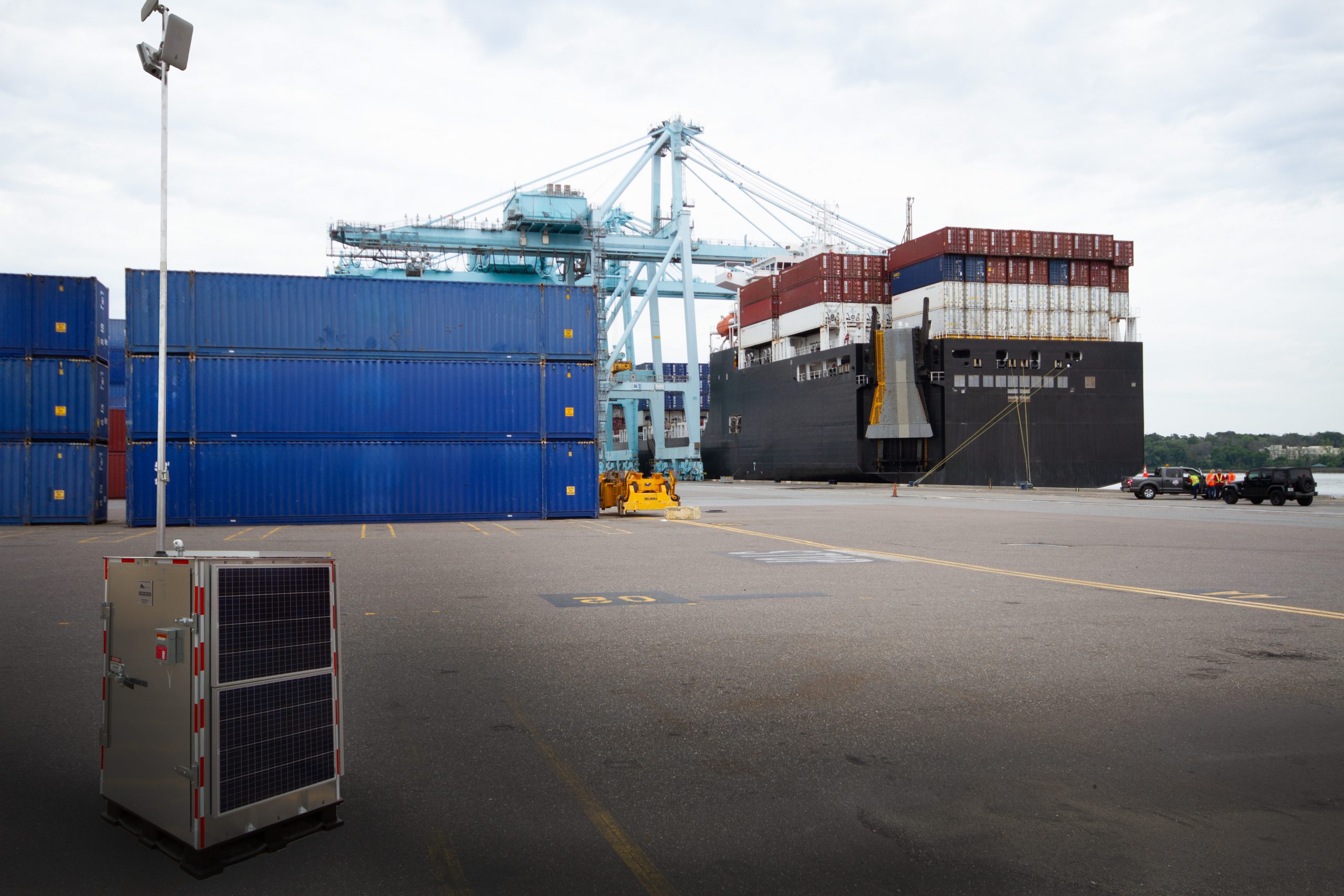
A cornerstone of Buckeye Mountains Rapid Deploy suite of products is the development and deployment of not only wireless design, implementation, industry leading monitoring and management services. Our key focus on providing guaranteed connectivity for our customers made us also look at providing power solutions to all our products including options for solar powered install points and battery backup systems that far exceed typical providers capability.
Our Rapid Deploy family of products features a wide range of standalone solutions to meet the connectivity needs of any outdoor environment. From high-mast towers to portable connectivity in remote and emergency scenarios, our autonomous solutions can be unified in a comprehensive Wi-Fi infrastructure that is configured to your property’s specific needs.
The Buckeye pledge to our customers also includes our above and beyond style of network monitoring and maintenance. Our Rapid Deploy networks are monitored and maintained by trained professionals 24 hours a day, 7 days a week. Often, we can alert our customers of anomalies or potential problems before they are aware of them from an operational perspective. The key to our success has always been the ability to proactively act to minimize downtime to your operations.
“Our solutions are tailored to each customer’s unique environment,” says Crooks. “We’re not an off-the-shelf company. We conduct on-site physical and RF surveys to ensure that our network designs are customized to the specific geographic location and the customer’s needs. This approach ensures that their investment is optimized, rather than relying on a one-size-fits-all solution.”
Buckeye’s Suite of Rapid Deploy Products
To meet individual environmental requirements, Buckeye Mountain often deploys a mix of Rapid Deploy solutions tailored to the customers’ needs. Our solutions most applicable to port environments include the following:
RapidSky
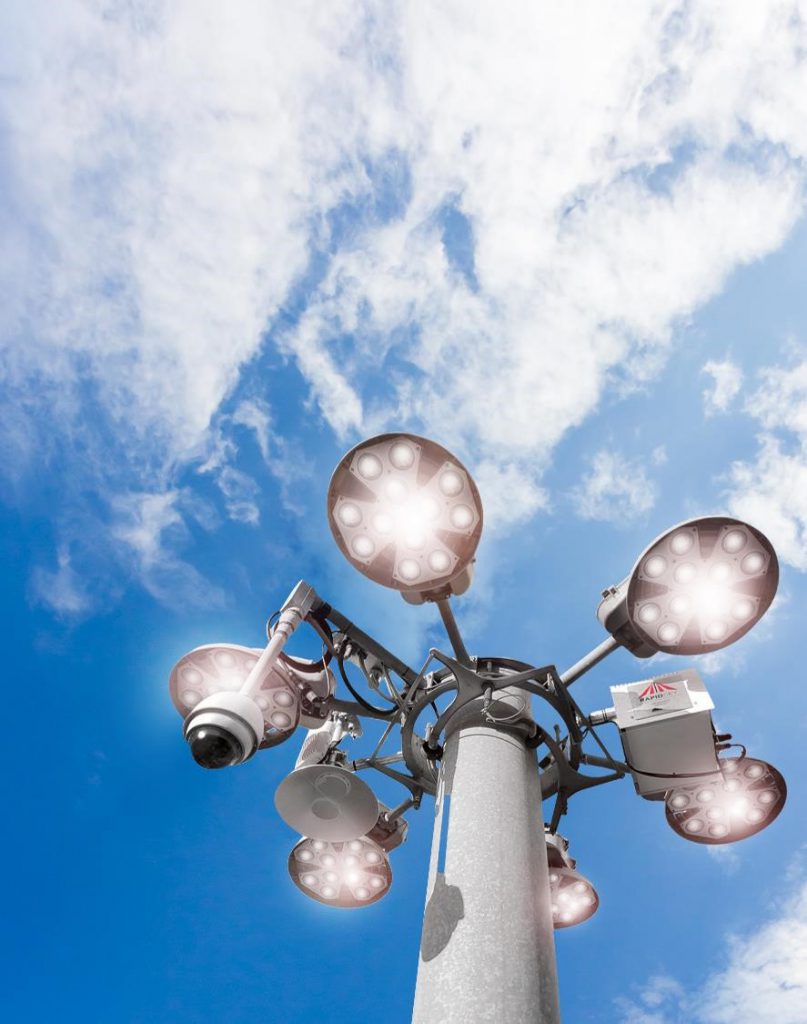
Developed specifically for the unique demands of marine terminal environments, RapidSky delivers Wi-Fi connectivity from light rings, or existing high-mast lights, mounted 100 feet in the air. By installing an access point high above container stacks in your yard, RapidSky’ s unique antenna design ensures reliable Wi-Fi coverage that overcomes the risk of stack interference in a dynamic environment. Coupled with our approach to use a high speed backhaul to provide a multi-gigabit fiber in the air backbone that translates into added reliability and performance.
RapidSky can be deployed alongside other Wi-Fi connectivity solutions to ensure that every square foot of your terminal enjoys consistent Wi-Fi access, reducing the risk of operational disruptions due to signal loss.
RapidOne
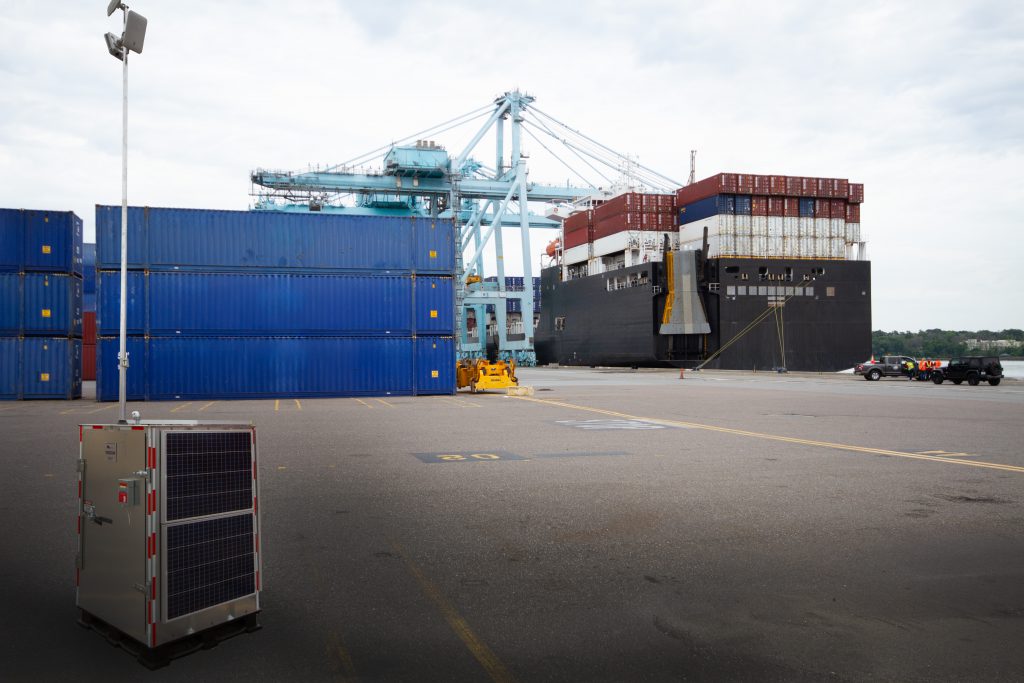
RapidOne provides fully standalone wireless connectivity through an attached 21-foot mast. Since these solutions are solar-powered and self-contained, they can be quickly deployed and moved in a matter of minutes or days and can be set up in difficult environments featuring gravel, uneven terrain, and exposure to extreme temperatures.
RapidMiniMax
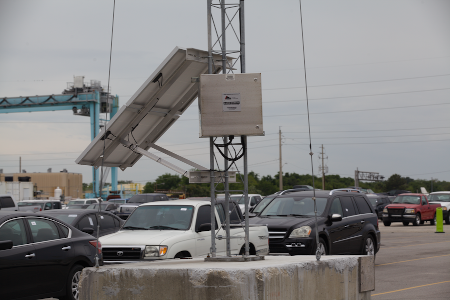
In ports where existing poles, towers, and other structures and surfaces are available, RapidMiniMax can be installed to turn these vertical assets into parts of your Wi-Fi infrastructure.
RapidMiniMax, which was originally deployed for port customers, can run on AC power or solar. It can be quickly deployed to improve wireless connectivity in your yard.
RapidFixed
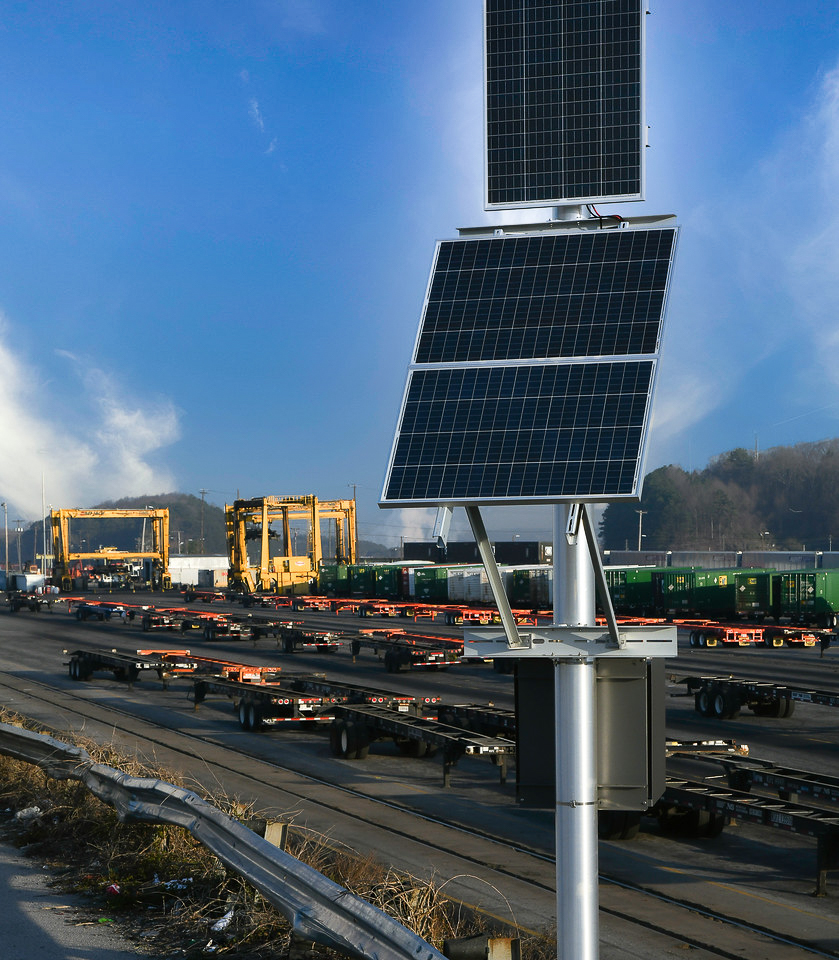
For port environments seeking permanent wireless infrastructure with minimal installation costs, RapidFixed is a scalable, cost-efficient connectivity solution designed specifically for dynamic terminal environments.
Originally deployed for our port customers, RapidFixed drills a single augured hole into the ground to install mix-mounted access points up to 35 feet off the ground—improving Wi-Fi access even among stacked intermodal containers.
How to get Started with Rapid Deploy
When a marine terminal is interested in using Rapid Deploy solutions for its wireless infrastructure, Buckeye Mountain’s experts have a streamlined, tried-and-tested approach to planning, designing, and testing each custom network before sending it out for deployment.
That process consists of the following stages:
- We use customer conversations to understand their unique needs and goals for deploying wireless infrastructure in their environment. These priorities guide our in-house design and build of the wireless network using whichever Rapid Deploy products are best suited to facilitating fast, consistent Wi-Fi coverage in the marine yard.
- Once the network is built, we bring in a team of engineers to configure, stage, and thoroughly test the infrastructure. This testing period, which can range from one week to one month, allows all of the networking hardware to “burn-in,” giving engineers a chance to identify any hardware defects that may create connectivity issues when placed under the strain of an outdoor terminal environment.
- After the burn-in period, we conduct a final round of testing to ensure that all solutions are in proper working order.
- We carefully break down the networking setup, package it securely to prevent any damage during transit, and ship the solutions out to the terminal site where our boots-on-the-ground team members can ensure a smooth deployment.
The Buckeye Mountain Difference: World-Class Support and a Design-First Approach
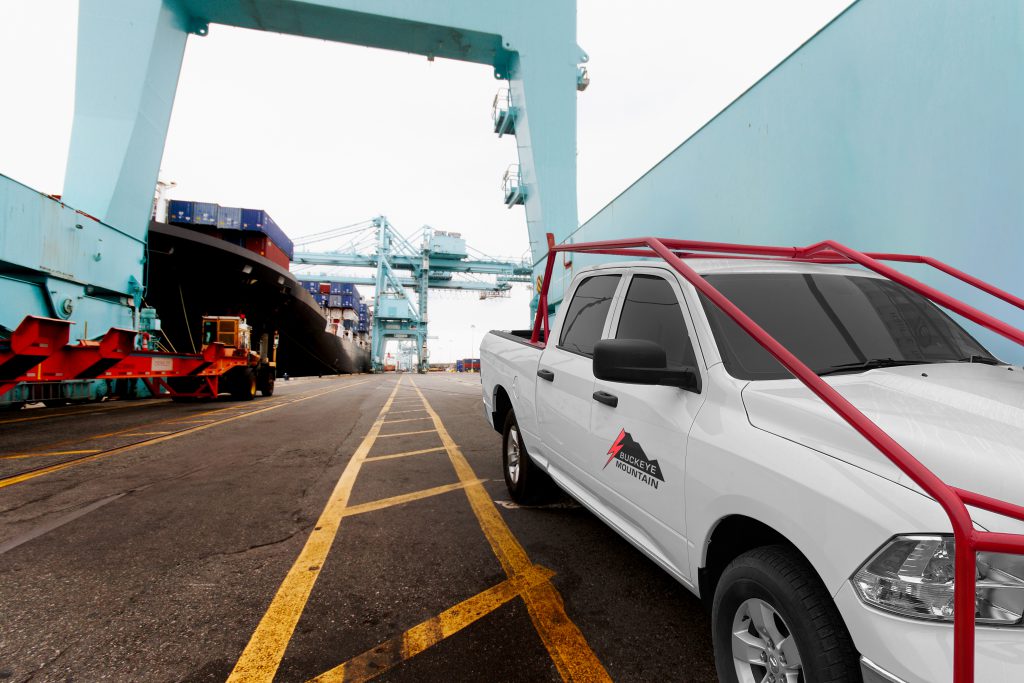
The value of working with Buckeye doesn’t stop with our Rapid Deploy family of products. Just as great wireless connectivity depends on a solid infrastructure, our Wi-Fi network deployments are backed by a responsive, supportive customer experience.
When you’re a Buckeye Mountain customer, you’re never on your own. From remote support to boots-on-the-ground assistance, we’re a partner in your operational success.
“One advantage of Buckeye is that we’re small enough to dedicate resources where they’re needed most, yet large enough to have those resources distributed and ready to deploy quickly,” says Crooks.
Meanwhile, our proactive mentality for designing solutions ensures that your networking technology can maximize its long-term value to your organization.
“The more proactive monitoring and maintenance you perform, the less you need to rely on being completely reactive,” says Crooks. “This principle is central to our support team’s approach. They are trained to focus on proactive measures to identify and address potential issues before they escalate and disrupt operations.”
James Crooks, Senior Solutions Architect at Buckeye Mountain
Unlock New Efficiencies Across your Rail Yard Operations
Poor connectivity is a drain on your day-to-day operations, leading to more stoppages, disruptions, frustration, and less revenue for your terminal.
The status quo is no longer acceptable. With our Rapid Deploy family of products, Buckeye Mountain can deliver fast, flexible, and scalable wireless infrastructure that benefits every facet of your day-to-day operations.
And, with Buckeye Mountain’s expert support, you can enjoy peace of mind knowing your networking system will be perfectly configured for your environment.
DIY vs Buckeye ‘Cradle to Grave’: What’s the Best Approach to Terminal Hardware Lifecycle Management?
DIY vs Buckeye ‘Cradle to Grave’:
What’s the Best Approach to Hardware Lifecycle Management?
Mobile computers and other specialized hardware have delivered powerful new capabilities that improve speed, efficiency, and productivity in rail and port terminals. But realizing the value of your hardware investment isn’t as simple as buying tablet devices and placing them in the hands of field operations teams.
Devices require constant management and maintenance to keep them in proper working order. Terminals require durable hardware that can withstand the wear and tear of a rugged work environment—and even then, those facilities need a plan to repair and replace damaged assets. And personal devices must be constantly managed and monitored to make sure they’re used in alignment with company policy.
All of these ongoing tasks fall under the umbrella of hardware lifecycle management—a strategic framework for maximizing the ROI of your terminal’s technology investments. Effective hardware lifecycle management improves the longevity, availability, and performance of your terminal hardware, which in turn delivers tangible performance gains for your field operations teams.
Terminals have two options for implementing hardware lifecycle management:
- DIY: Your in-house technical teams handle everything on your own: hardware deployments, device management, software updates, repairs, and everything in between.
- Working with a lifecycle management partner: At Buckeye Mountain, for example, our cradle-to-grave approach encompasses the full lifecycle for every hardware solution. From creation to disposal, we manage the full lifecycle thoughtfully and responsibly, ensuring it aligns with your operational and environmental goals.
Let’s dive into the pros and cons of each approach—and lay out the business case for partnering with Buckeye Mountain.
What it Means to Tackle Lifecycle Management with a DIY Approach
Businesses that handle hardware lifecycle management in-house must pull from their existing personnel and resources to enable this strategic framework.
Inadequate resource support can undercut the effectiveness of DIY lifecycle management. This lays the groundwork for a number of issues which can impact the cost and value of these hardware investments:
Higher Rates of Hardware Downtime
One of the core objectives of lifecycle management is to maximize the availability of hardware for your field ops teams.
Equipment breakdowns, malfunctions, and device damage are inevitable in challenging rail and port environments. Any instance of hardware downtime can impede operations and overall business performance.
“Speed is critical because it equates to minimal downtime—especially when dealing with rail and port terminals. In a rail yard, even 10 minutes of downtime can feel like a significant stoppage for workers on the ground and can have costly effects on a terminal.”
Erica Toney, Southeast Operations Manager at Buckeye Mountain
An Increase in Worker Distractions
In a DIY scenario, hardware distractions can come in two forms.
The first is the amount of time workers end up spending to manage hardware and software on their own instead of fulfilling their primary work responsibilities. These management tasks cancel out some of the productivity gains of the hardware—while also increasing the risk of human error in hardware management.
In some cases, workers may use these devices to access applications or other content that is prohibited on the job site.
“In a rail yard, you can’t have a train and engine employee—someone responsible for counting and assessing train cars—standing there watching YouTube on an iPad,” says Toney.
But without access to industry-leading mobile device management systems and other remote device management capabilities, DIY lifecycle managers may not have the tools they need to enforce these device policies.
Excessive Repair and Maintenance Costs
Without a readily available, scalable process for handling hardware maintenance and repairs, the DIY approach is likely to result in high repair and maintenance costs that impact your organization’s capital budgets.
If organizations don’t anticipate these costs and allocate an appropriate budget, DIY lifecycle managers could face situations where their capital budget is exhausted before the year’s end, resulting in longer delays for device repairs and even higher rates of equipment downtime.
Even with a budget in place, the lack of proven, efficient repair and maintenance processes is almost certain to inflate the cost of performing these services in-house.
What Terminal Workers can Accomplish When They Aren’t Tasked with DIY Lifecycle Management

In-house lifecycle management may seem more affordable because it doesn’t create a new line item expense. But the apparent up-front savings of a DIY approach only ends up stealing resources and productivity away from other parts of your operations, forcing terminal workers to set aside other responsibilities that are essential to yard operations.
By lifting the burden of a DIY strategy, those workers can then prioritize their core requirements and contribute to other key terminal initiatives, including the following:
Uninterrupted service during natural events
A severe storm or other natural event can threaten a terminal’s ability to maintain operations. When lifecycle management is being handled in-house, terminal workers may need to focus on getting devices and systems back online to mitigate downtime and keep operations running.
But with a partner like Buckeye Mountain managing this hardware, terminal workers can instead focus on performing their regular tasks. Buckeye can manage everything remotely, and terminal operations can proceed uninterrupted.
“We work closely with our customers—not just on the hardware side, but also to ensure failovers are in place for situations beyond their control,” says Toney. “We understand that outside of the day-to-day hardware support involved in lifecycle management, there are mission-critical scenarios where operational continuity is non-negotiable.”
Ensuring Compliance with Rail Operations Regulations
As terminals move from paper to electronic documentation, materials like rule books and safety documents must always be accessible. This access needs continual oversight to ensure that a failed app update or other technical issue doesn’t restrict access to essential materials.
DIY lifecycle management often leans on terminal workers to make sure this documentation is available—instead of using that documentation to support terminal safety and other compliance requirements.
With a partner like Buckeye managing devices remotely and ensuring continual access, terminal workers can spend more of their time using that documentation to enable more efficient, compliant operations.
The Benefits of Outsourced Lifecycle Management: What Buckeye Mountain Brings to the Table
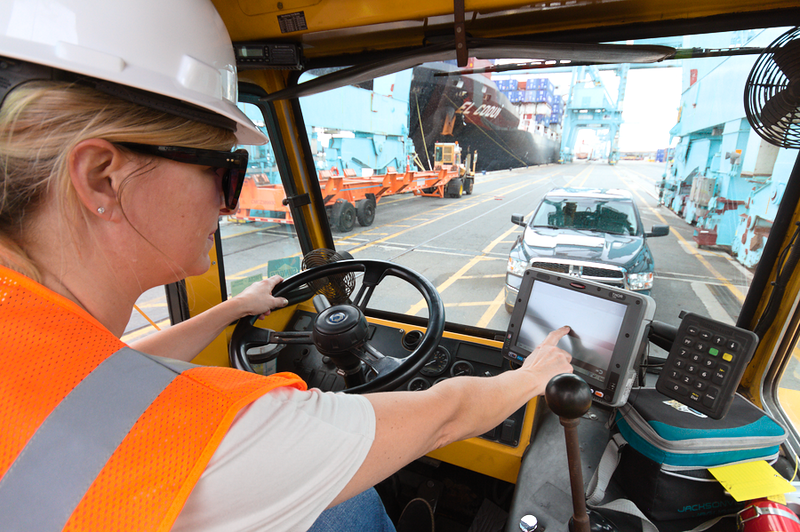
Terminal hardware is a significant investment. A lifecycle management partner like Buckeye Mountain can help you maximize the ROI of that investment, equipping your organization with operational efficiencies, hardware expertise, and agile support that would be infeasible and unsustainable to allocate internally.
Here’s what you can expect from Buckeye Mountain’s cradle-to-grave lifecycle IT services:
Exceptional Customer Service and an Agile Approach
Hardware lifecycle management is a big part of what we do. Whether you’re faced with managing inventory, configuring devices, coordinating repairs or deploying new devices, Buckeye can do it faster and more efficiently than your in-house personnel—even when your needs arise outside of traditional working hours.
“Our commitment to exceptional customer service is evident in both our business-hour service centers and our 24/7 support operation center, which all thrive on Buckeye’s customer-first culture,” says Toney. “This approach exemplifies how we efficiently manage the speed and demands of hardware lifecycle management.”
As terminal technology and hardware infrastructure evolve, Buckeye Mountain also retains the agility to help address emerging changes and seize opportunities to procure new hardware that best serves your facility’s long-term goals.
“Our customers are understandably focused on their day-to-day operations—which means they aren’t always paying attention to the long-term trajectory of their technology, including whether devices are outdated or approaching the end of their lifespan,” says Toney. “Part of our ‘cradle-to-grave’ approach involves keeping track of devices and operating systems nearing the end of their life cycles while understanding the future of projects so we are able to set our customers up for seamless transitions into new hardware rollouts.”
Erica Toney, Southeast Operations Manager at Buckeye Mountain
Timely Device Management and Repair
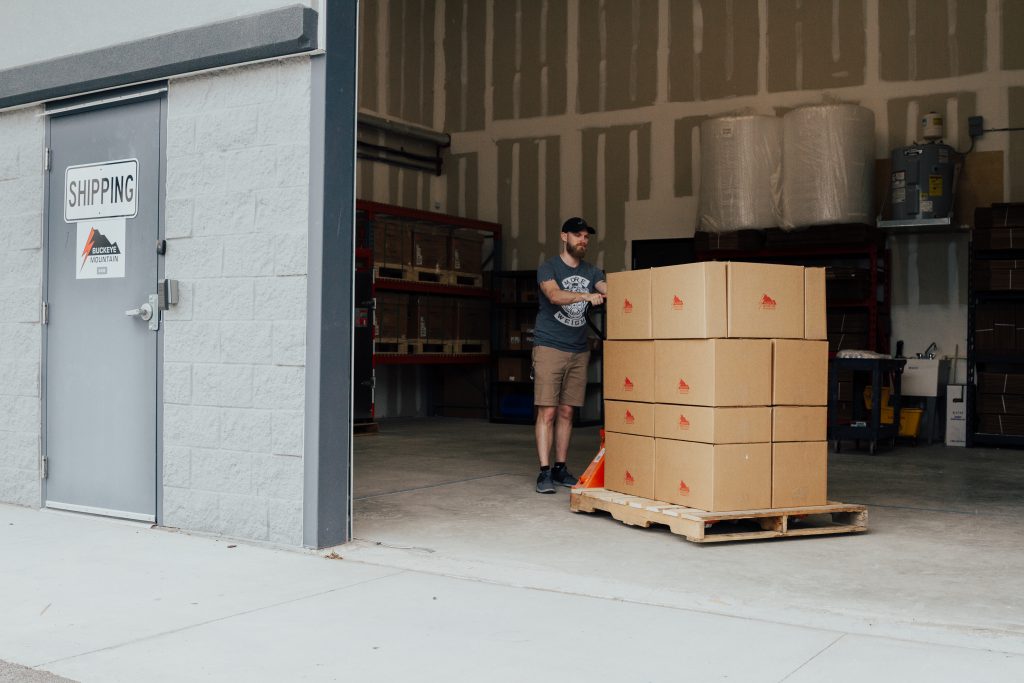
Buckeye Mountain takes on all responsibility for device management and repair. Our scalable device service allows for fast, cost-effective repairs that spare our customers the headache of worrying over unexpected hardware costs. We execute repairs quickly to minimize device downtime and keep terminal operations rolling.
“For us, this means offering same-day shipments for devices when needed, immediate remote support for resolvable issues, and being consistently accessible during operational hours,” says Toney. “This approach exemplifies how we efficiently manage the speed and demands of hardware lifecycle management.”
An Unmatched Partner, from Procurement to Replacement
Our lifecycle management services are comprehensive. We don’t leave any gaps for our customers to fill, and we pride ourselves on being a technology partner that adds value at every stage of the hardware lifecycle.
“A true partnership means both parties are equally invested in the success of the relationship,” says Toney. “At Buckeye Mountain, we’re deeply integrated into our customers’ experiences. We’re part of their successes and their challenges. We remain fully engaged throughout every phase of the lifecycle management process, ensuring we’re not just a vendor but a true partner in their technology journey.”
Erica Toney, Southeast Operations Manager at Buckeye Mountain
Manage hardware lifecycles at your own risk
Effective lifecycle management isn’t something you can piecemeal from your existing internal resources. It requires expert oversight, long-term strategic planning, and the freedom to quickly take action at scale without interfering with terminal operations.
A DIY approach puts your hardware ROI at risk—and could lead to a plague of inefficiencies and disruptions spilling over into your terminal operations. Buckeye Mountain can help you avoid this outcome while enabling the efficiencies, productivity gains, and long-term cost controls you envisioned when investing into upgraded terminal hardware.
Put your trust in Buckeye Mountain’s lifecycle management expertise.
Before You Buy: Considerations for Upgrading and Replacing Terminal Hardware
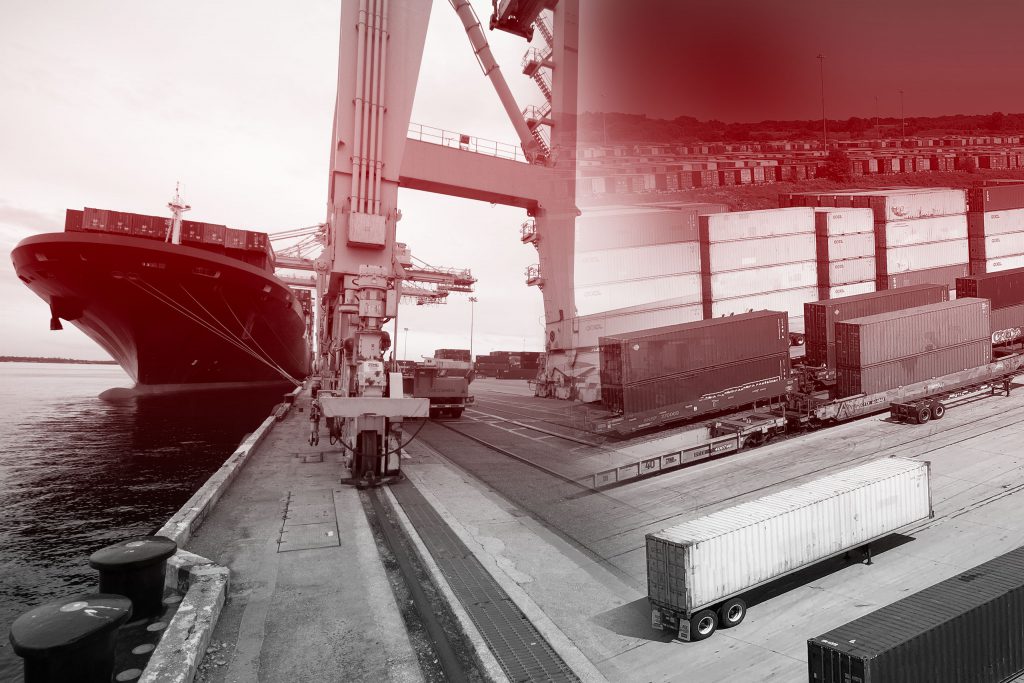
BEFORE YOU BUY: Considerations for Upgrading and Replacing Terminal Hardware
Equipment breakdowns are part of daily life on marine and rail terminals, as is purchasing and installing new terminal hardware to replace outdated and defunct equipment. Procurement managers purchasing equipment are often faced with an all-too-common scenario: take all equipment training, maintenance, and repairs in-house or feel locked into a vendor-specific support agreement when purchasing that equipment.
It’s only later—often a few months after declining offers of additional ongoing vendor support—that they return to the vendor in search of faster, cheaper, and more consistent support than what their in-house professionals or hardware-specific vendors can provide.
“When you add maintenance and repair to the workload of in-house technicians, you end up pulling resources away from core operations,” says David Fajardo, Manager of Field Technical Services at Buckeye Mountain. “Suddenly, there’s a man-hour cost to fixing hardware on top of the operational cost of equipment downtime—which turns every small problem into a five-alarm fire.”
The difficulty of maintaining equipment internally only increases over time. Terminal operating systems are becoming more intelligent and more complex—so is the new equipment deployed on the terminal. As a result, maintaining and repairing this equipment has become a heavier lift, increasing the strain placed on in-house technicians.
Buckeye Mountain’s field technical support services are designed to alleviate this burden, freeing up in-house technicians and resources to focus on supporting the terminal’s core operations. Terminal managers can coordinate planned, strategic equipment updates that prevent resource exhaustion and operational downtime by outsourcing equipment maintenance and repair to a trusted partner.
Read on to find out how our “boots on the ground” approach can help improve equipment availability and long-term value at your terminal while supporting better distribution, logistics, and other operational efficiencies for your customers.
Understanding the Strategy Behind Purchasing the Hardware
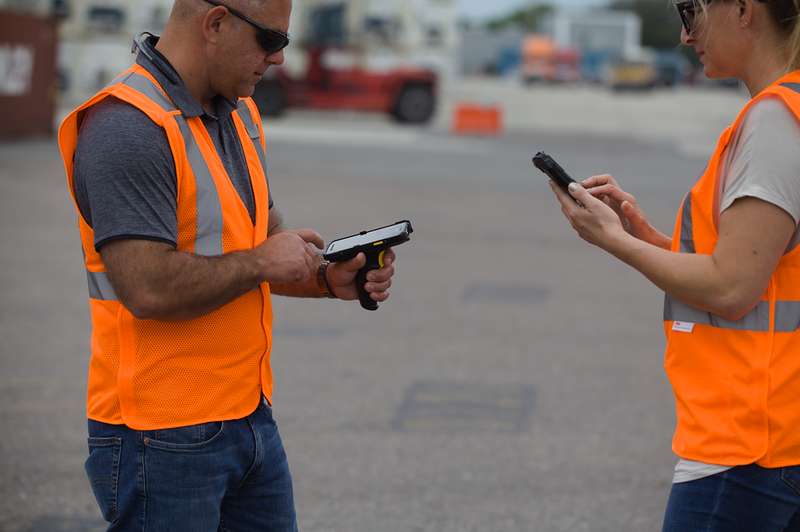
Purchasing the right hardware is only part of a successful procurement process. Before that purchase, procurement leaders face several strategic decisions that will affect the performance and value of that equipment throughout its lifespan.
By making these decisions ahead of your purchase, procurement managers can work with field operations leaders to determine the best approach for managing the equipment’s maintenance, repairs, asset management needs, and technical support.
Maintenance Plan and Warranty
Maintenance plans and equipment warranties help set the foundation for the long-term value you create from your hardware investment.
Warranties protect your company if your new equipment doesn’t meet quality assurance expectations. Meanwhile, a robust maintenance plan is critical to ensuring hardware receives preventative maintenance that reduces equipment failures and operational downtime.
“With almost any hardware installation we perform, we try to set up some sort of preventative maintenance plan,” says Fajardo. “You always want to correct issues before they become a problem.”
Before purchasing your hardware, find out if preventative maintenance is included in the purchase to maximize the longevity and reliability of your asset. Review your warranty carefully to understand the type of coverage you can expect if problems arise within the warranty period.
Asset Management
A comprehensive asset management strategy is critical to tracking hardware maintenance and servicing across the asset lifecycle. This is particularly important for terminals tracking many pieces of hardware facing unique maintenance needs and different stages of their lifecycles.
Whether your on-site field operations team or a third-party service provider handles your asset management, ensure you have a clear plan for managing new hardware purchases alongside your existing technology.
Regular hardware auditing should be a subset of your asset management strategy. Hardware auditing helps you track physical assets that you may reallocate within the terminal, and it supports preventative maintenance by making sure upcoming parts replacements and other asset management tasks are performed on schedule.
These audits are necessary to confirm that all equipment operating at your terminal is still meeting expectations regarding performance, efficiency, and any applicable compliance requirements.
Configuration and Repairs
Routine configuration of equipment ensures that your hardware is optimized for peak performance. Hardware relocated or utilized for a new purpose may need to be configured to its new environment and requirements.
Hardware configuration and repairs can disrupt your terminal’s work environment. Strategic planning is needed to coordinate repairs and servicing so that operations experience minimal disruption, if any.
Terminals tasking hardware configuration and repairs to in-house technicians may face a greater risk of disruption due to limited labor and resource flexibility: since in-house technicians are juggling hardware repairs alongside a laundry list of other responsibilities, they may not have the luxury of scheduling repairs during periods of non-peak workloads for the facility. Disrupted operations can increase material costs for your customers and the facility itself.
Tech Support and Downtime
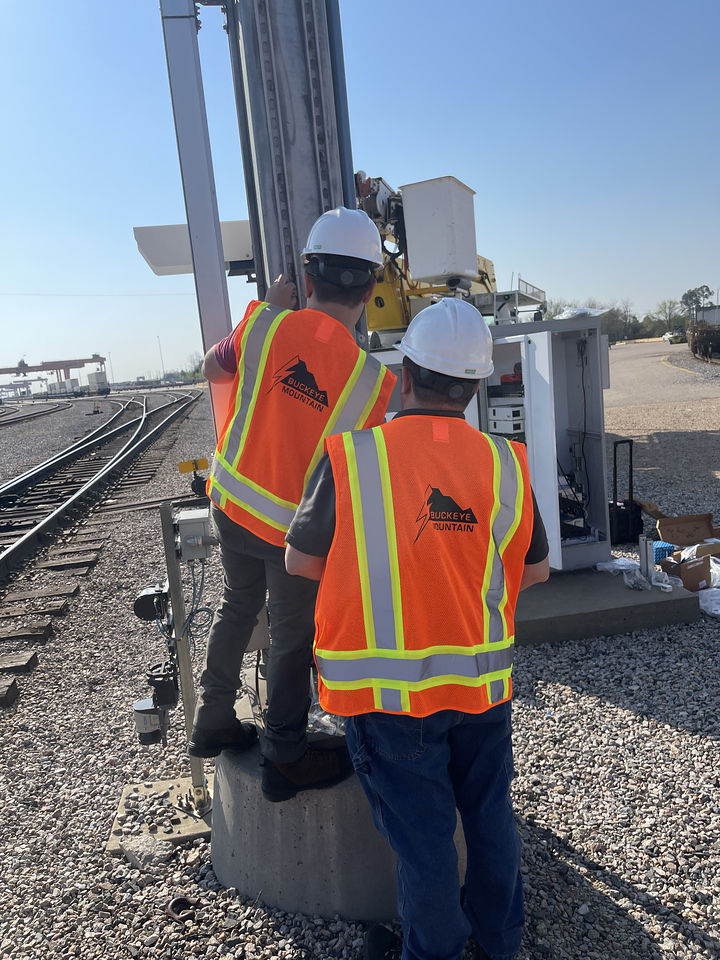
Equipment failures and other hardware issues can have a disastrous impact on terminal operations, resulting in significant outages that bring operations to a halt and cost the facility—and its customers—revenue.
When technical issues arise, a single in-house technician often needs more resources and bandwidth to quickly resolve the issue, leading to extended downtime and mounting financial losses. Professional support services, like Buckeye Mountain, on the other hand, are better equipped to respond with multiple technicians in the field who can quickly resolve the issue and bring your equipment back online.
“Technical issues can be a daily occurrence at some terminals, and many of these issues must be addressed manually by on-site technicians,” says Fajardo. “Since Buckeye knows how to install this hardware correctly, though, we’re able to reduce the frequency of these issues—and if something goes wrong, we’re right there to help.”
Accounting for Long-term Cost vs. Long-term Value
Equipment costs don’t end when you purchase your new hardware. But, the expense incurred over that equipment’s lifespan depends on your strategy for handling maintenance and repairs, minimizing equipment downtime, and maximizing the lifespan of your assets.
Higher costs don’t always result in less value for your investment. With equipment servicing, the opposite is often true: proactive spending for preventative maintenance and repair can substantially increase potential value creation from your equipment.
Procurement managers can help optimize costs and maximize long-term value potential by setting up an equipment servicing plan that prioritizes cost-efficient spending and long-term equipment health.
Increasing Longevity while reducing downtime
Equipment upgrades and replacements deliver an immediate impact to terminal operations. Even for procurement managers, it’s easy to get stuck on those short-term gains and overlook the long-term implications of that hardware investment.
In the end, though, the overall value each asset delivers for your organization will be determined by its longevity, long-term costs, and performance across the equipment lifecycle. Your equipment servicing plan directly affects each of these success metrics.
“It’s just like your car: If you take care of it, it’s going to last longer,” Fajardo says. “We’re like the mechanic working on your car: We keep the equipment well-maintained so that terminal operators get more longevity from each asset—and, in turn, get a better return on their hardware investment.”
According to Fajardo, this approach has enabled Buckeye Mountain to add years to the lifecycle of the customer equipment it manages. Thanks to Buckeye’s proactive maintenance, companies hoping to get five years of service out of a single asset regularly enjoy seven or eight years of service from that equipment.
The Impact of Repairs, Support, and Maintenance on Capital Budgets
Poor asset management practices can lead to inconsistent and delayed equipment maintenance, along with an increase in preventable repairs. These inefficiencies can result in budget overruns that leave your operations team with broken equipment and no room left in the budget for repairs.
In-house asset management can increase your organization’s exposure to these increased costs—especially if asset management is handled on a case-by-case basis when something needs repair. Since in-house technicians must juggle equipment maintenance and repair, among other tasks, costly delays are all but inevitable.
“We had one customer who moved away from our ‘boots-on-the-ground’ approach to bring asset management in-house and save on equipment servicing costs,” says Fajardo. “They quickly realized they lost a lot of asset management expertise that Buckeye Mountain brings to the table. We do things beyond scope to ensure our customers are taken care of—and we have an internal structure for managing assets that other companies can’t match.”
How Buckeye Mountain Adds Value
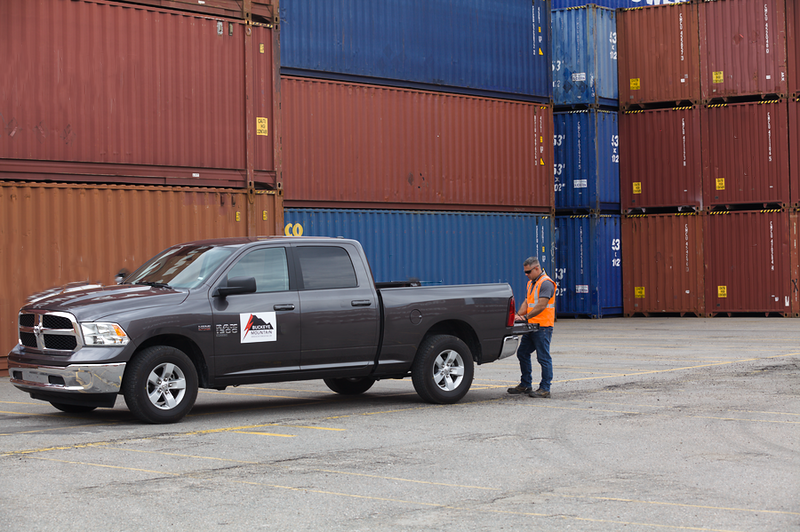
Outsourced equipment servicing not only helps you control hardware costs but also reduces the burden placed on in-house technicians.
It also allows your terminal to leverage the expertise of a service partner who can manage the entire equipment lifecycle for all of your assets—and do it better, more efficiently, and cheaper than your business could on its own.
When you choose Buckeye Mountain as your equipment service provider, you can expect the following:
Comprehensive Services
Buckeye Mountain is a value-added reseller across the rail, intermodal, and port industries. We offer competitive pricing and services tailored to your terminal’s unique needs.
When you contract with us as your equipment service provider, we work with you to develop a service plan that meets and exceeds your organization’s expectations. We go above and beyond our scope to deliver a turnkey solution that is flexible to your needs.
End-to-end Support
From product sourcing to lifecycle management, our service support covers equipment installation, training, maintenance, repair, and replacement—all to extend hardware lifespans, minimize operational disruptions, and maximize the value of your equipment investment.
Continuous Maintenance and Rapid Response
We quickly deploy a boots-on-the-ground presence when maintenance and repair services are required.
Our ongoing, on-site support provides continuous coverage for the full spectrum of equipment servicing needs, including rapid replacements and hardware upgrades to minimize downtime and ensure operational continuity.
Support Subscriptions for Managed Services
Expand your Buckeye Mountain service relationship by adding subscription options for 24/7 support. Our managed services can be configured to your facility’s unique needs, including remote and in-person support options.
We also offer coverage for a wide range of service needs, including network maintenance and equipment training.
Get the Most from Our Equipment Investment
Upgrading and replacing terminal hardware isn’t cheap. But if you don’t properly manage and maintain this new equipment, your long-term costs will soar—and the value of these assets will continue to decline until they reach the end of their lifecycle.
Buckeye Mountain can help you avoid this outcome. We provide a boots-on-the-ground presence to support your equipment across its lifespan, improving its longevity and availability while lowering costs and freeing up in-house resources.
Invest in your equipment by investing in Buckeye Mountain’s expertise.
Rapid Deploy Wi-Fi Buyer’s Guide
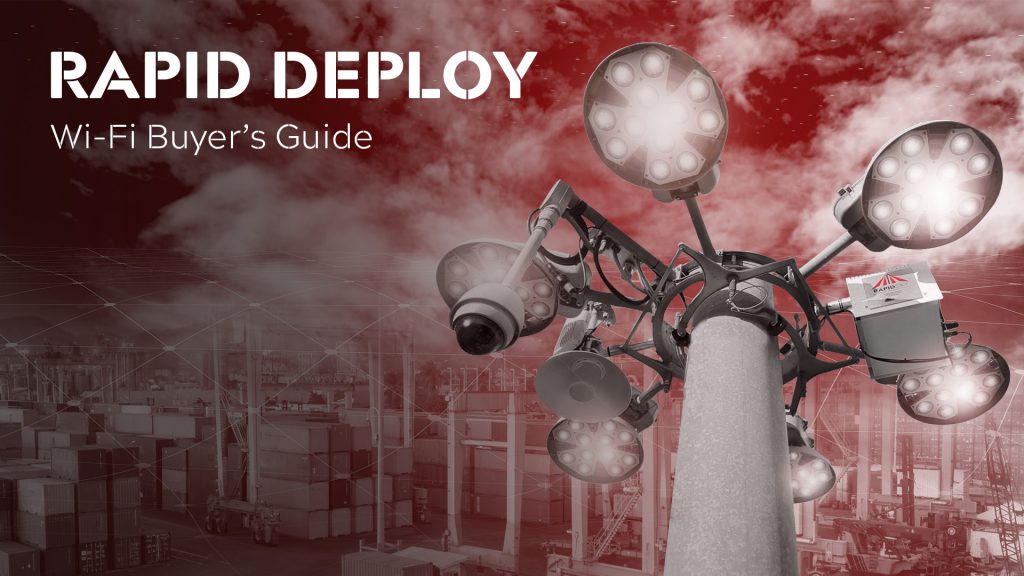
Rapid Deploy Wi-Fi Buyer’s Guide
The best wireless communications infrastructure should be designed specifically for the environment where it’s deployed.
But what happens when that environment drops a few thousand tons of corrugated steel in the path of your hotspot?
That’s exactly the challenge faced by rail yards and marine terminals. One day, your mobile devices will have clear lines of sight to the access points supporting local communications. The next day, shipping containers formed a 60-foot-tall wall, blocking that pathway and resulting in a poor or lost signal. And that’s only one problem plaguing transportation companies’ wireless connectivity.
“Managing connectivity in an outdoor environment is understood to be different than an office building or a home – but managing an ever changing outdoor environment creates even more of a challenge. You aren’t just monitoring uptime and downtime; it’s managing the infrastructure and coverage, high amounts of noise, and detours in network paths – all of which Rapid Deploy has engineered and designed. Redundancy is the backbone of Rapid Deploy. Whether it’s power or signal, we’ve built this to withstand the harshest environments.”
— Alex Wright, Regional Sales Director, Buckeye Mountain
Wireless connectivity is a crucial, though often challenging, infrastructure component for rail, intermodal, and marine operations. Reliable and managed connectivity powers the essential technology in these environments. However, the current approach has fallen short of providing operators with the necessary technology, expertise, and support to establish and maintain consistent Wi-Fi coverage. And as many rail and marine yard operational leaders already know, the convenience of LTE and private LTE connectivity comes with stark limitations of its own.
So Buckeye Mountain developed our Rapid Deploy family of products to be the partner that operators need.
In this buyer’s guide, we aim to:
- Identify the top problems affecting wireless connectivity in today’s rail, intermodal, and marine environments.
- Explain how our family of Rapid Deploy products can help your operations overcome these limitations.
- Show how our patented approach allows for faster, cheaper deployments than alternative infrastructure solutions.
- Get you started with some key questions to ask as you approach the task of reconfiguring wireless connectivity in your yard.
Today, Buckeye Mountain is a leading provider of end-to-end solutions for the intermodal and rail industries, providing rugged hardware, customized software, wireless network infrastructure, and robust tech support and operations consulting to rail and intermodal yards around the country.
In the past, all of these challenges were compounded with the lack of support of resource management software and solutions to alleviate this manual burden.
The unique challenges of improving connectivity in the yard
Outdoor environments are challenging in their own right. But even within the transportation space, the specific difficulties facing Wi-Fi connectivity can vary from one location to the next.
Differences in the physical space, types of shipping and transport taking place in those environments, existing infrastructure already in place, and operations personnel themselves can all affect not only the problems facing Wi-Fi communications, but also which technology might offer the best solution.
Here are the most pervasive obstacles to improved Wi-Fi connectivity:
The Physical Landscape is Constantly Shifting
In both rail yards and marine terminals, heavy lift equipment will often take steel containers that are constantly being unloaded, stacked, relocated, and loaded for shipping, and cause dramatic changes to the landscape of the environment.
As a result, Wi-Fi and LTE signals end up bouncing off containers enroute to their destination, resulting in degraded communications and, in some cases, signal loss. The ever-changing landscape and height of these container stacks make it impossible to reliably plan traditional Wi-Fi infrastructure that is able to reach all parts of the yard at all times.
On-the-Ground Personnel Lack RF Expertise
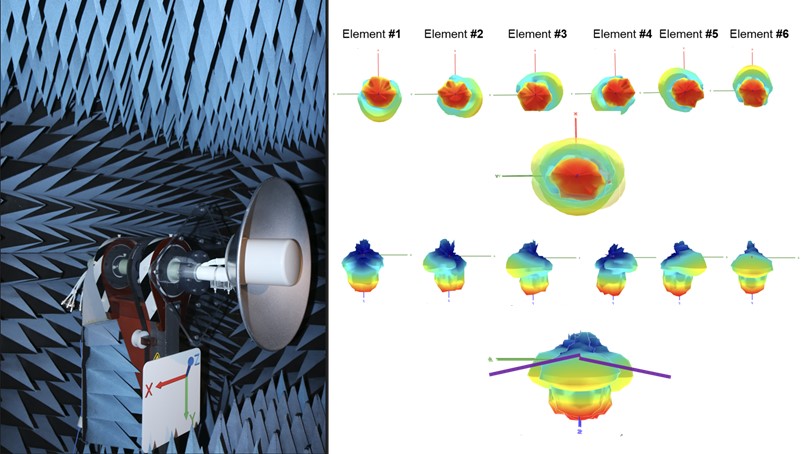
Networking engineers are present at many rail yards and marine terminals to help address networking challenges that might arise.
While these engineers may have some familiarity with wireless networking, collaborating with them provides an opportunity to share deeper knowledge of radio waves and RF engineering. By working together and providing accessible training, we can add extensive expertise to better understand how the environment impacts communications and effectively address any Wi-Fi connectivity challenges.
A Consistent Power Supply is Essential for Wi-Fi Devices
Routers, switches, and other Wi-Fi devices are often slow to reboot after a power outage, extending the Wi-Fi network’s downtime as those devices return to normal operations. To maintain connectivity and support continued operations, Wi-Fi infrastructure needs to be supported with backup power supplies that can support devices through an extended outage.
“We’ve put a lot of effort into making sure that we have systems that have extensive backup times,” says Steve Hill, Director of Wireless Engineering at Buckeye Mountain. A typical backup power unit, he explains, is designed to run a server for only the time it takes to get the device properly shut down—not to last through an extended power outage.
“Our systems are designed to outlast power outages for 24 or 48 hours,” Steve shares. “In fact, we have systems out there right now that have gone seven years without an unplanned outage.”
Infrastructure Installation Can Be Costly and Complex
Conventional Wi-Fi infrastructure comes at a much higher cost than alternative connectivity solutions—and the installation of this infrastructure can be highly disruptive to day-to-day operations.
Even after this infrastructure is installed, the endpoint devices deployed can lead to signal loss and other service issues in a constantly changing outdoor environment. Properties investing in Wi-Fi infrastructure are paying for premium connectivity, but the hardware powering this connectivity isn’t configured to the unique needs of dynamic rail and marine terminals.
LTE’s Ease of Use Isn’t All That It Seems
Rail and marine terminals have historically relied on cellular service providers because they are widely available and require no infrastructure installation. But LTE’s ease of adoption comes with the trade-off of suffering regular connectivity issues.
Compared to the high cost of installing conventional Wi-Fi infrastructure, those connectivity issues have often been viewed as the lesser of two evils. Still, the long-term opportunity cost of LTE has left rail and marine environments in desperate need of a more reliable connectivity solution.
Ongoing Maintenance is Required to Protect your Investment
The task of ensuring Wi-Fi connectivity doesn’t end when you install supportive devices in your outdoor environment. Continued maintenance and management are required to maximize network uptime, prolong the lifespan of devices, and realize cost efficiencies over time.
Rail and marine terminals either need to dedicate resources to this maintenance themselves or find a company that will provide ongoing support and service to their network.
Today’s options for wireless connectivity
No matter what provider you choose, or how they package their services and solutions, the wireless connectivity options available to rail yards and marine terminals fall into one of three categories: LTE, private LTE, or Wi-Fi.
Here’s an overview of each solution, including its strengths and weaknesses specific to the connectivity challenges of dynamic outdoor environments:
LTE Carriers
LTE/cellular carriers provide wireless connectivity over the same network used to serve individual consumers. Despite glaring limitations regarding its liability and throughput, LTE connectivity has been a popular option for larger terminals because of its accessibility and ease of deployment.
“LTE is a big competitor of ours right now, but it doesn’t solve a lot of the problems,” says Wright. “One of its biggest shortcomings is that it can’t support major uploads. Most terminal operating systems have upload requirements that exceed the capabilities of LTE.”
Says Hill: “Can LTE provide connectivity? Absolutely. Can it provide reasonable speeds? Absolutely. But is it reliable enough for your network? Can it provide the throughput that I’m going to need? No.”
Pros of LTE
- Reasonable speeds and connectivity
- No equipment installation required
Cons of LTE
- Not reliable enough for mission-critical workloads
- Can’t provide enough throughput to support rail and marine terminal operations
- Support from large cellular carriers will always be subpar given the time constraints of a container terminal or critical railyard.
- Inability to managed efficiently and effectively
Private LTE Network Equipment Providers
Private LTE uses the Citizens Broadband Radio Service to access unlicensed spectrum where individual entities can run their wireless communications across clean, available frequencies with little risk of interference. Equipment providers can give Intermodal yards the technology they need to set up their own “private” network for wireless connectivity, enjoying the connectivity and speeds of LTE while achieving reasonable throughputs.
But access to private spectrum comes with a catch. The FCC controls access to CBRS channels by dividing licensed providers into tiers. As a private LTE user, you’re a lower class of user than the larger wireless providers such as Verizon and AT&T—and if those higher-tier organizations need access to the spectrum you’re using, you could get kicked off.
“Before you access that spectrum, you have to go through a spectrum access system (SAS) administrator who confirms your identity and location and verifies that there’s an available CBRS channel for you to use,” says Hill. “If they give you the thumbs-up, off you go. But if a first or second-tier provider comes along and needs that channel, the SAS is going to drop you.
“So there’s an availability limitation, and a question of reliability, that comes with private LTE.”
Pros of private LTE:
- Access to clean frequencies
- Reasonable throughput
Cons of private LTE:
- Channel availability is not reliable
- Bandwidth limitation may not be sufficient for terminal operations
- Manage unplanned downtime due military presence, the highest tier of CBRs
Wi-Fi Service Providers
The wireless connectivity offered by Wi-Fi is unparalleled, delivering excellent availability, bandwidth, and throughput to support rail and marine operations at scale. But outdoor environments present a unique challenge when planning and deploying Wi-Fi infrastructure. Since most conventional Wi-Fi devices use omnidirectional antennas, they send and receive energy in every direction—even the wrong ones. In an outdoor setting, this can lead to high amounts of interference.
“In a hospital, you might have 500 or 1,000 access points,” Hill says. “But a hospital has walls, and the walls reduce the amount of signal spread, so you’re not going to have as much interference from all the access points that you would in the outdoor environment. But you can’t have 500 outdoor access points across the yard.”
Along with these logistical limitations, Wi-Fi service also comes at a premium cost: installing infrastructure is expensive and disruptive, and you could still suffer persistent connectivity issues despite your large investment.
Pros of Wi-Fi:
- High spectrum availability
- High bandwidth
- High potential throughput
Cons of Wi-Fi:
- Omnichannel antennas lead to increased interference in outdoor environments
- Wi-Fi signal from conventional access points weakens quickly with distance
- Poorly suited to a dynamic environment
- Conventional Wi-Fi installation costs are much higher than alternative solutions
Introducing: Autonomous Wireless Solutions (Rapid Deploy)
Unique problems require a unique solution. Rather than help rail and marine terminals get the most out of imperfect wireless connectivity solutions, Buckeye Mountain decided to create our own.
Thanks to this problem-solving approach, we’re proud to offer our customers a suite of autonomous wireless solutions supporting connectivity in any outdoor setting. Meet the Rapid Deploy family of products: our patented approach to deploying networks and delivering unparalleled performance in even the most challenging outdoor environments.
Our Rapid Deploy technology has been developed to serve various environments and use cases, ranging from fully standalone wireless networking to portable connectivity for emergency scenarios. Through these autonomous solutions, and with Buckeye Mountain’s ongoing support, rail and marine terminals finally have access to a comprehensive wireless connectivity solution resolving the pain points that have plagued their operations.

RapidOne
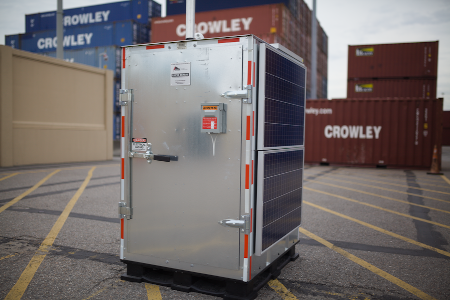
Designed for environments requiring a fully standalone wireless network, RapidOne is a solar-powered, self-contained networking solution that provides connectivity through an attached 20-foot mast. Devices are deployed in minutes or days and can operate in compact spaces, on gravel or hard surfaces, and amid exposure to extreme temperatures.
RapidOne systems can be deployed as a single, standalone unit, as a network of multiple units across a property, or as a supplement to existing wireless infrastructure.
RapidMiniMax

Turn existing structures and surfaces into supports for new wireless infrastructure. RapidMiniMax is a wireless networking solution that can attach to poles, towers, and other structures and surfaces to leverage existing vertical assets for improved wireless connectivity.
RapidMiniMax can run on existing AC power with a battery backup, or it can be configured to run exclusively on solar power. Like RapidOne, the RapidMiniMax can be quickly deployed in challenging environments and can function as a standalone solution or as part of an existing wireless infrastructure.
RapidCase
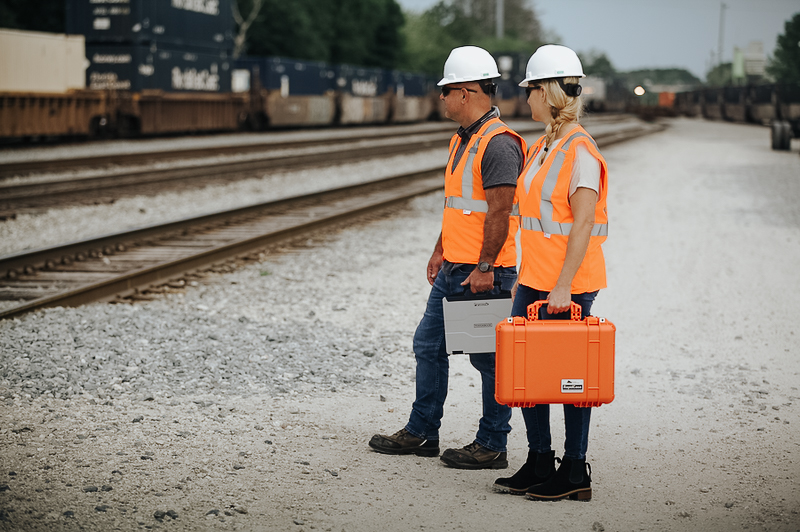
For on-the-go and remote situations, our RapidCase product is a compact, portable, network-in-a-box solution offering turnkey connectivity with the push of a button.
A portable, lightweight case contains everything you need to support Wi-Fi connectivity over a significant area, making RapidCase a critical tool for remote field work, emergency scenarios, search and rescue operations, and other planned and unplanned events. The case’s weatherproof design, extended battery life, and multiple backhaul options offer the flexibility and durability you need to support connectivity in the most challenging environments
RapidSky
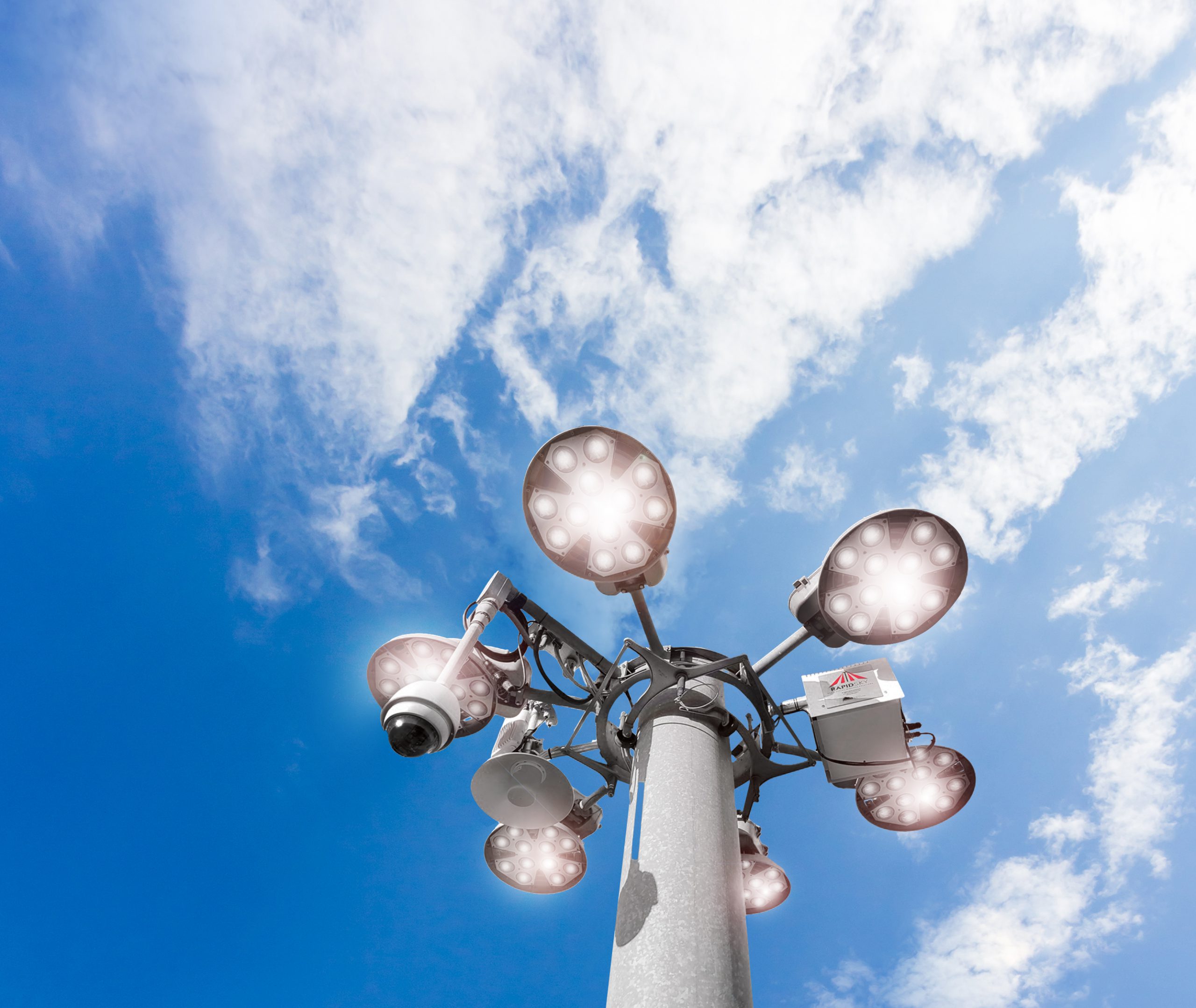
Engineered to address the challenges of intermodal shipping and storage, RapidSky ensures reliable Wi-Fi coverage in shifting environments where high container stacks can create significant interference for other Wi-Fi networking technologies.
RapidSky uses light rings, or existing high mast lights, mounted 100 feet in the air to optimize signal patterns and connectivity, directing Wi-Fi signals toward the ground from an elevation that can overcome the stack interference common in marine and intermodal environments. (Not to mention you can run them on solar.)
RapidCrane

Designed for critical wide-span crane operations, RapidCrane offers high-speed, low-latency wireless connectivity that gives rail and marine crane operations the multi-gigabit speeds and redundant paths needed in this environment.
RapidFixed
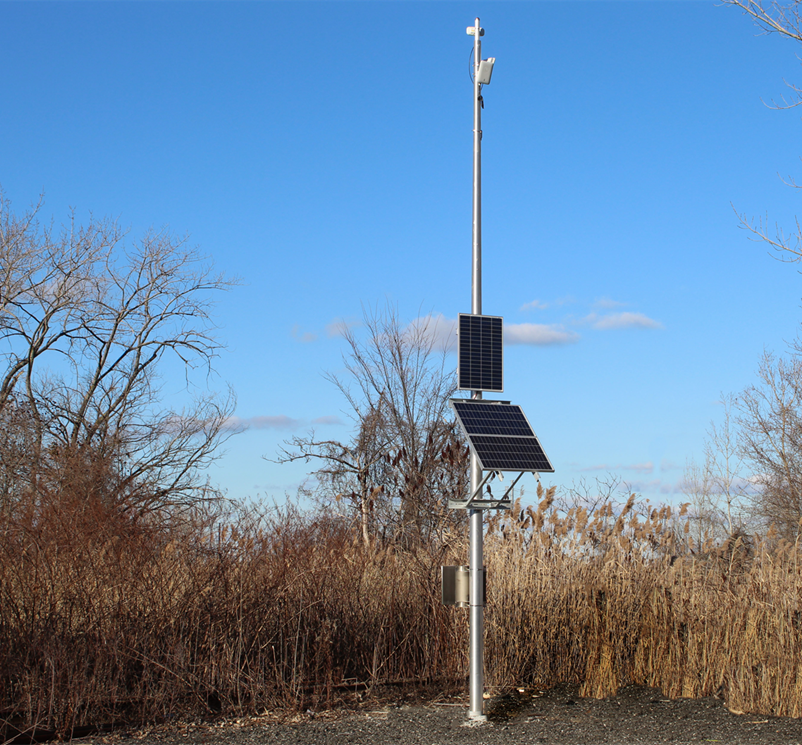
Implement permanent wireless infrastructure through an installation requiring only a single augured hole. RapidFixed is a ground-anchored, elevated networking solution designed for deployment in environments with stacked intermodal containers.
With straightforward installation and the ability to scale your network with multiple RapidFixed units, this wireless connectivity product can be deployed in days while slashing your capital expenditures for installing and managing infrastructure. Access points are mounted on a mast that can reach 35 feet high for clearance above multi-container stacks in your yard.
RAPID DEPLOY IN ACTION: Customer Success Stories
With our family of Rapid Deploy products, we’re able to choose the right technology to address unique challenges facing our rail, intermodal, and marine customers.
“We have a patented very unique way of deploying, maintaining, and guaranteeing wireless connectivity inside of those very abusive environments,” says Greg Dunnell, Principal at Buckeye Mountain. “We solve the problems that others can’t because we live in those environments 100 percent of the time.”
Here are two success stories that began with a connectivity problem and ended with a Rapid Deploy solution:
Delivering reliable connectivity for an intermodal rail facility
The Problem:
Our intermodal rail customer was relying on an outdated narrowband solution to provide connectivity at their facility. But new applications desired by the company required high throughput and reliable connections unavailable through existing infrastructure and nearby cellular coverage.
Our Solution:
Buckeye’s Rapid Deploy team installed RapidFixed systems at nine of the company’s intermodal facilities. Thanks to the solution’s speed of delivery and operational impact, the company has continued to expand its use of RapidFixed systems at other intermodal facilities.
All locations using RapidFixed technology continue to be monitored and maintained through Buckeye Mountain’s connectivity-as-a-service model.
Ensuring Continuous Operations for a Maritime Port Facility
The Problem:
After deploying outdoor antenna systems to support wireless connectivity through local cellular service, one maritime port facility found that cellular connectivity couldn’t offer the reliability and performance required by its operations—especially in extreme weather conditions, and in an environment where containers could be stacked five high.
Our Solution:
Buckeye Mountain’s Rapid Deploy systems quickly demonstrated their value by maintaining wireless connectivity during a hurricane that struck the customer’s maritime port. Since then, the company running this port facility has relied on Buckeye to implement Rapid Deploy systems at four additional port facilities, as well as on two container ships.
MORE THAN TECHNOLOGY: The importance of working with technical experts
Investing in the right technology can put your wireless connectivity efforts on the right path forward. But to realize the performance and value of those solutions, you need ongoing support from technical experts who can plan deployments and provide continued remote monitoring and support.
That’s why expert-led support is a consistent point of emphasis at Buckeye Mountain. Our goal isn’t selling as many products as possible—it’s about ensuring continued customer success and satisfaction with the wireless connectivity we deliver.
Here’s how we achieve that goal:
Design and Installation Support
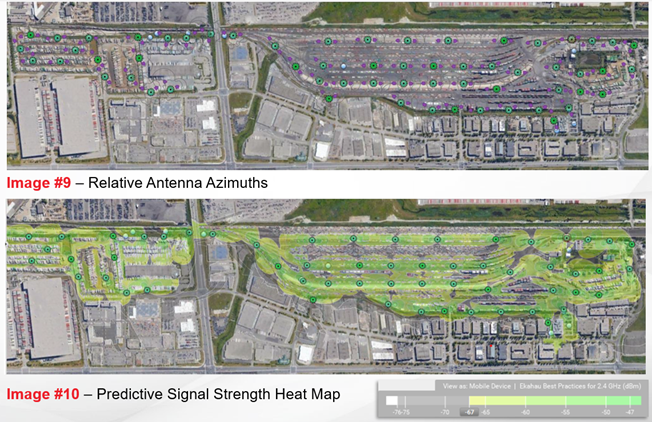
We use predictive studies, spectrum analysis, site surveys, and heat mapping to help plan a wireless infrastructure solution specific to your environment’s needs. Our design services are offered with the sole goal of fitting your facility with the right wireless products to maximize connectivity and your mobile experience.
Our installers ensure that all Rapid Deploy products are properly deployed, connected to power, and configured to support connectivity in your environment.
Ongoing Remote Management
Once your network infrastructure is live, our comprehensive remote management support monitors all conditions relevant to your Wi-Fi systems. Our remote management dashboard can track everything from throughput to system temperature to solar power energy yields and can notify your operations team or dispatch personnel if any equipment needs servicing.
Field Training and Operational Support
Achieving buy-in from on-the-ground operations personnel is a critical component of deploying new infrastructure solutions. Our in-house field technical services teams, composed of full-time employees, are experts at working with personnel to provide proper training, onboarding, and technical support that will maximize the value of your infrastructure investment.
“A big part of technical support is making sure that on-the-ground staff have confidence in the solution that they’re using,” says David Fajardo, Manager of Field Technical Services at Buckeye Mountain. “That means confidence on the training side, but also confidence that the solution is going to work every single time. If something’s not working, we need to be there to fix it.”
Key Questions to ask before Reconfiguring Wireless Connectivity in your Yard
Even with convenient, quick-deploy solutions like our Rapid Deploy products, upgrading your wireless infrastructure is a significant undertaking. Given the cost, complexity, and impact on operations, each facility must perform its due diligence before choosing a new approach to wireless connectivity.
As you approach this decision, here are some questions to ask any potential infrastructure solutions provider:
1. Why does this technology cost so much?
If you’re only anticipating the cost of the hardware itself, you might experience some sticker shock when faced with the full cost of new connectivity infrastructure. That’s because hardware is only part of the total package: facilities may also need solar power and battery solutions, mobile products, and ongoing support from the provider—not to mention regular maintenance to keep equipment operating at peak performance.
“We don’t want any of our customers worrying about their hardware after we leave,” Hill says. “So we install, provision, and test the equipment, but we also maintain it 24/7/365. If any hardware fails, we’re going to replace it and it’s not going to cost you anything extra.”
(Side note: Buckeye Mountain guarantees connectivity, or your money back.)
Although some field and IT leaders may be tempted to seek out lower-cost infrastructure solutions that offer greater short-term impact, this approach carries long-term consequences.
“A lot of times, the reason these companies are coming to us now is because, 10 or 15 years ago, someone implemented a cheap system that the terminal quickly outgrew,” says Hill. “So it’s about trying to help the prospect understand that our infrastructure is not only better, but it’s probably going to be cheaper in the long run.”
2. When we need to talk to an expert, who should we call?
Rail and marine facilities need more than new technology. They need accountability and expert support when problems arise.
Whether you’re dealing with technical issues, onboarding difficulties, network performance concerns, or other challenges, you need full confidence that you can quickly connect with an expert offering guidance and other resources.
3. What is the long-term benefit of investing in quality wireless infrastructure?
Faced with surprising costs related to new infrastructure investments, some field and IT leaders may be tempted to seek out lower-cost infrastructure solutions that offer greater short-term impact, even at the expense of more pronounced long-term benefits.
“A lot of times, the reason they’re coming to us now is because, 10 or 15 years ago, some network admin implemented a cheap system that they quickly outgrew,” says Hill. “So it’s about trying to help the prospect understand that our infrastructure is not only better, but it’s probably going to be cheaper in the long run.”
4. What future costs will this infrastructure help me avoid?
On the subject of cost: when evaluating wireless infrastructure options, take some time to get more granular about the long-term outlook for this investment, especially when it comes to future cost avoidance.
If better battery systems and backup power reduce outages and downtime, for example, you can avoid the opportunity cost of stalled operations. Meanwhile, faster and more reliable connectivity can accelerate operations and realize new efficiencies across your facility workflows, controlling costs and supporting greater revenue generation. Aligning your network and technology plans can help you scale effectively. As you adopt new technologies like AI, remote operations, and high-resolution cameras, you’ll need a strong network to support them.
5. Can you point to success stories for projects similar to ours?
Satisfied customers are a strong marker of credibility. If an infrastructure provider can point to successful past projects involving similar needs and challenges to your own facility, you can have more confidence in their ability to deliver for your property.
“One thing we will never do is grow into a space without first being experts or investing in those who are already experts in that space,” says Dunnell. “We understand that we can’t go in there expecting to be taken seriously. And we recognize that if we did behave that way, we would not be acting in the best interest of our customer.”
There’s No Need to Worry About Your Wireless Connection
In dynamic outdoor environments, conventional wireless connectivity can change like the weather. Some days you’ll get sun, other days storms.
But field operations can’t function with unpredictable connectivity. They need consistent, reliable coverage, as well as high throughputs to keep their workflows humming.
That’s why we created our Rapid Deploy family of products. And, with Buckeye Mountain’s commitment to excellent delivery and expert support, we do everything we can to help our customers maximize the value of their wireless investment.
Don’t let a poor wireless connection drag down your operations. Find out how Buckeye Mountain can help you design and deploy an infrastructure tailored to your environment’s unique needs.
Ready? Let’s talk.
The Buckeye Mountain Story
How Buckeye Mountain is Bridging the Gap Between Operations and Technology
Efficiency, coordination, and safety are all central to the daily operations of any rail yard or terminal. But field operations leaders must address and overcome a wide range of operational challenges impacting their daily workflows and processes:
- High turnover rates limit the knowledge base and performance of rail yard staff.
- New technologies adopted to streamline operations can face resistance from frontline workers—and technological challenges in implementing these solutions can further impact their functionality and ROI.
- When operations leaders are tasked with supervising multiple sites, they often struggle to manage inventory, asset tracking, and resource allocation at scale and across multiple sites.
Three founders recognized the negative impact these operational challenges had across the rail industry. More importantly, they saw an opportunity to transform rail yard operations by bringing together their experience in the industry and technology-forward approach to create Buckeye Mountain more than fifteen years ago.
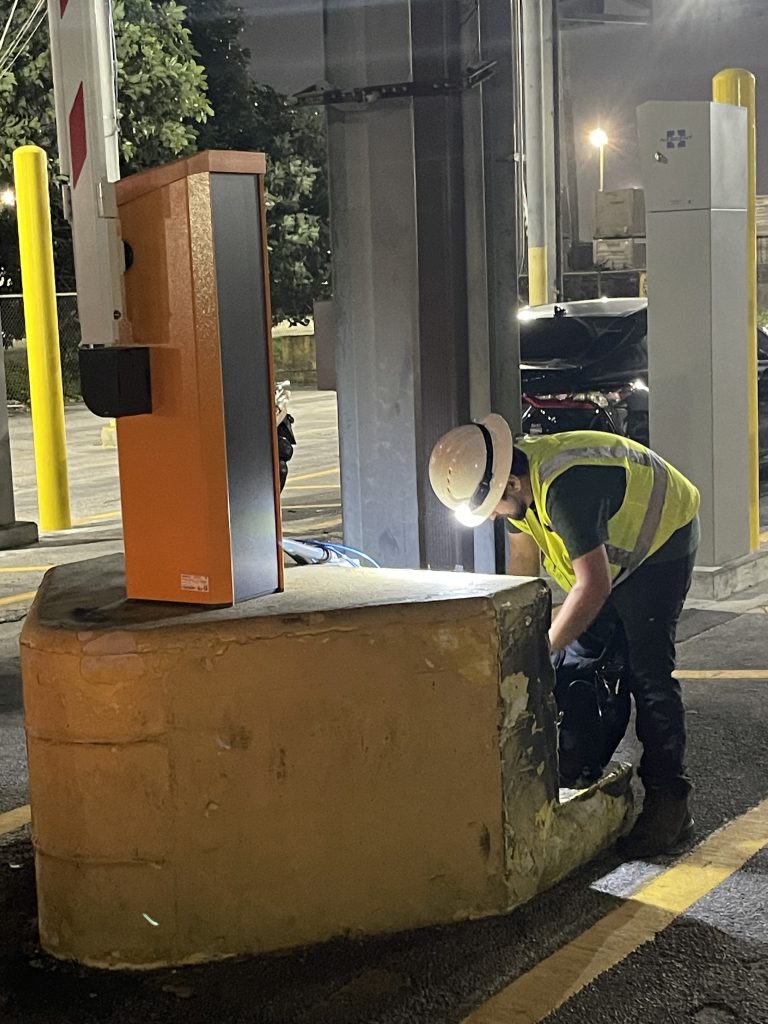
“Our intent from the start was to try and truly understand the problem to be solved, and then leverage streamlined processes and technology to solve it,” says Greg Dunnell, Principal at Buckeye Mountain. “And if it didn’t exist, we innovated and built it side by side with our customers until it met their needs.”
“That was the origin of Buckeye. We took all of those technological elements – software, hardware and wireless – and tried to put them in one place to make it easier for our intermodal/railroad customers. One hand to shake for all your technical solution needs.”
Today, Buckeye Mountain is a leading provider of end-to-end solutions for the intermodal and rail industries, providing rugged hardware, customized software, wireless network infrastructure, and robust tech support and operations consulting to rail and intermodal yards around the country.
In the past, all of these challenges were compounded with the lack of support of resource management software and solutions to alleviate this manual burden.
The Buckeye Mountain story
Most rail yards are operated by a patchwork of contracted vendors handling gate control, inventory management, safety and other critical aspects of operations.
Add to that the dozen or some companies working on the railroad itself—with each organization focused on specialized infrastructure such as locomotives, rail cars, and intermodal transportation—and it’s easy to see how the fragmentation of rail yard operations presents a challenge when trying to streamline workflows, implement operationally vital technology tools and maintain consistently efficient processes.
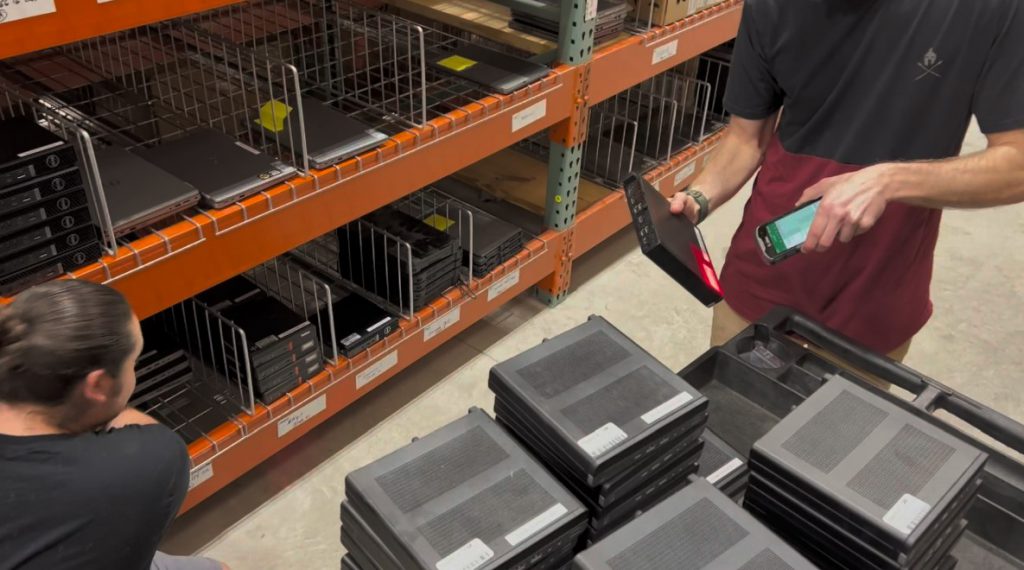
Buckeye Mountain was founded to address these limitations, delivering value to its customers by using technology to unify, coordinate, and optimize rail yard operations.
“When we formed in 2006, we were focused on using the ‘three-legged stool’ of software, wireless, and mobile devices to help our railroad customers get the most out of their technology investments,” says Dunnell. “We’ve continued to grow, transitioning from that starting point to where we are today.”
Leadership focused the organization’s resources and efforts on becoming an unrivaled technology leader in the rail industry.
“We believed we would gain enormous credibility by taking time to understand this market,” says Matt Hunter, Principal of Sales and Operations at Buckeye. “We made a very conscious effort to be laser-focused on our customers’ needs.”
Says Dunnell: “Early on we found ourselves competing most directly with our customers themselves because they had set up organizations within the railroads to provide these critical services. But because we were able to focus on this one specialty that aligned with our core competency, we were able to deliver more cost effective results that exceed our customer’s expectations.
“That’s how we won over our first customers—and we continued growing from there.”
A problem-solver for intermodal supply chain
As the volume of rail-based intermodal transportation has increased in recent years—fueled by the growth of e-commerce and rail’s superior cost-efficiencies over truck-based transport, among other factors—Buckeye Mountain has expanded its investments into solutions tailored specifically to the intermodal space.
Intermodal transportation presents a different set of challenges than railroad operations. Since intermodal shipping containers are moved by trucks, trains, ships, and cranes, and can be stacked several units high for compact storage, Wi-Fi connectivity and communication becomes more complex. Likewise, the technology deployed into these environments must be durable enough to withstand rugged conditions.
Buckeye Mountain addressed these limitations by developing new mobility solutions tailored to the unique needs of intermodal transport.
“We have a patented, unique way of deploying, maintaining, and guaranteeing wireless connectivity inside of those very difficult intermodal environments,” says Dunnell. “We solve the problems that others can’t because we live in those environments 100 percent of the time.”
Expanding into marine operations
In recent years, Buckeye Mountain’s core competencies as a rail and intermodal solutions provider have served as a bridge connecting the company to inland and port customers.
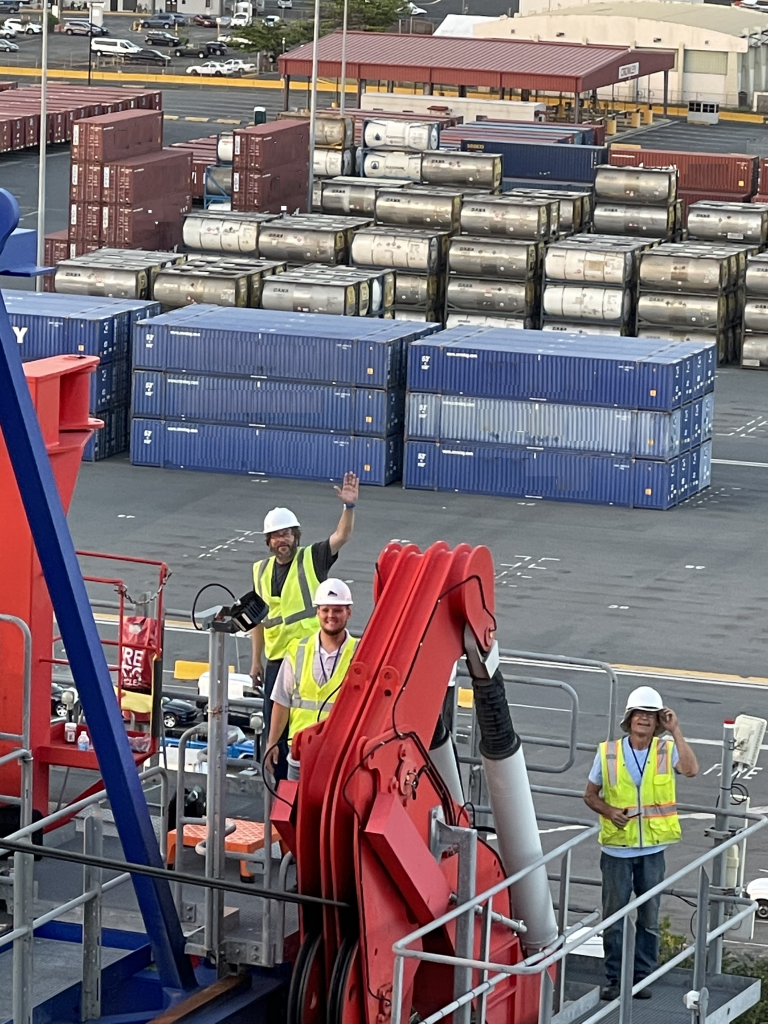
Many of the core offerings utilized by intermodal customers—including Buckeye’s Rapid Deploy Wi-Fi coverage solutions and its “boots on the ground” approach—are relevant to the pain points commonly faced by marine terminal operations. With supply chain operations encompassing multiple modes of transportation, the technology used to manage and streamline those operations is blurring the lines of differentiation that have historically kept them separate.
For Buckeye Mountain, this isn’t about “blurring the lines”—it’s about leveraging proven technologies in new environments.
“While we may move into a new area of the business, we’re able to leverage things we’ve done in the past to bridge that gap,” says Matt Gretz, Principal of IT & Software Development at Buckeye Mountain. “Seventy percent of the new solution might be something we’ve already done for a different project, so our customers trust us to take on new challenges.”
Buckeye delivers the hardware, the software, and the technical support
Successful digital transformation requires an end-to-end approach. That’s why Buckeye Mountain isn’t simply a solutions vendor, with a consultative approach with each customer, identifying solutions to address their most urgent pain points and ensuring success through proper implementation, onboarding, and ongoing support.
Here are three key cornerstones of that customer-centric approach:
Wireless network infrastructure
Traditional wireless providers prioritize consumer needs over the vital connectivity required by rail terminals. Buckeye Mountain equips rail, intermodal, and marine operations with reliable connectivity delivered through a patented, unique infrastructure built for challenging intermodal outdoor environments.
The Rapid Deploy family of products, including RapidSky, provides consistent Wi-Fi coverage even in difficult settings such as high-stack intermodal areas and marine ports. These custom-built solutions can overcome environmental interference, optimize signal patterns and connectivity, and monitor Wi-Fi connection quality for enhanced connectivity and a better user experience.
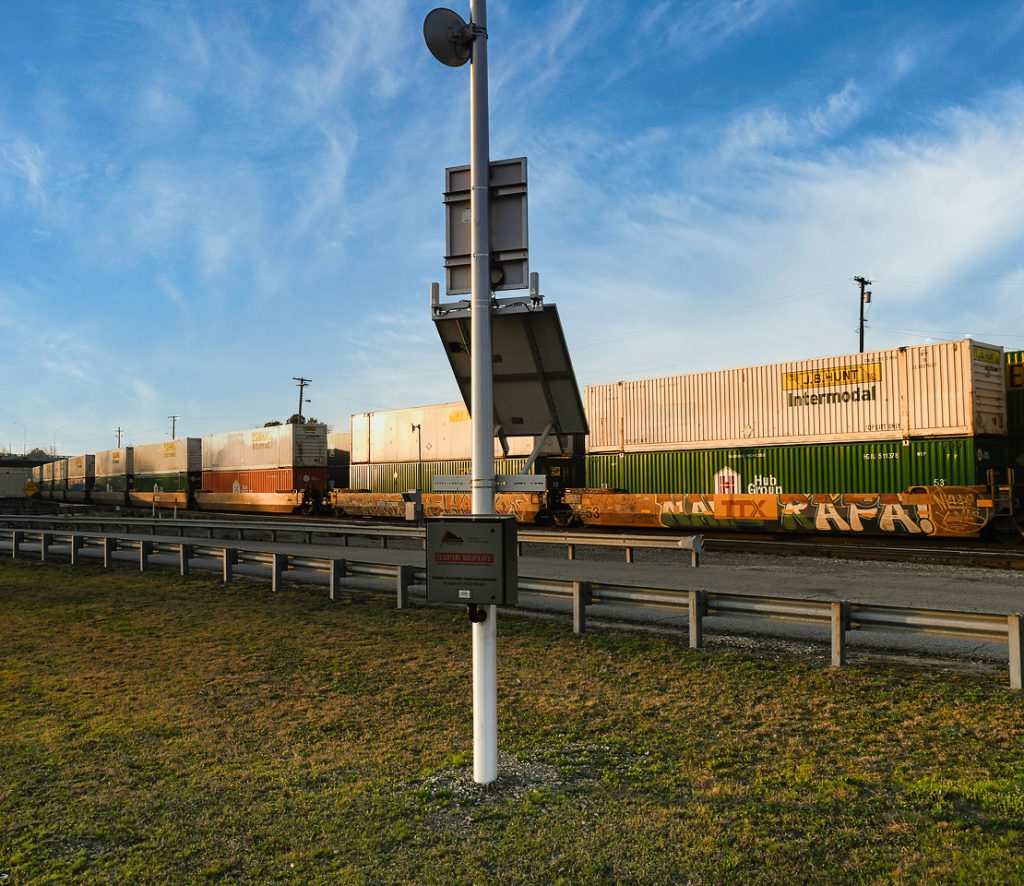
Boots on the ground
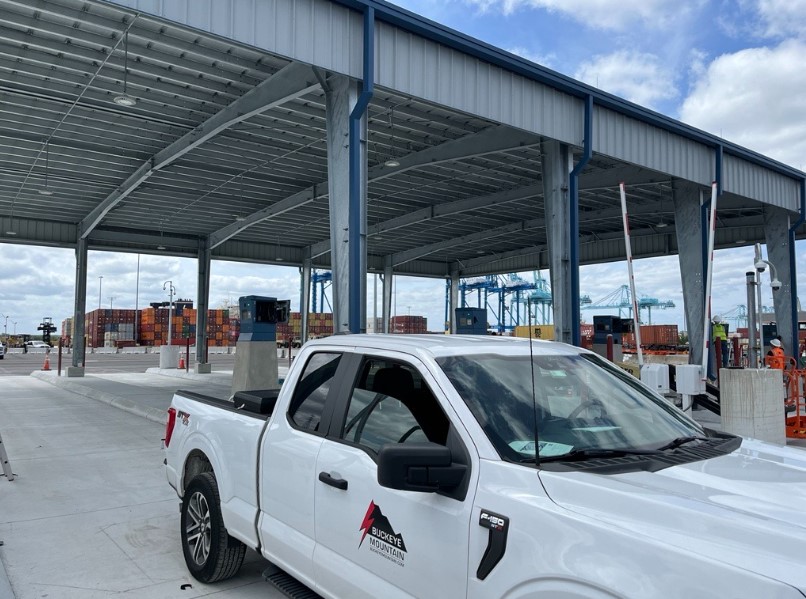
High turnover rates, combined with an underutilization of new technologies and tools, can undercut the impact and value of new technology investments. Buckeye is changing this status quo by offering operator services that staff terminals with Buckeye personnel who can serve as adept operators and knowledgeable custodians of this new technology.
This “boots on the ground” approach is Buckeye’s solution to reducing the impact of high staff turnover and the expertise gaps common among operations teams, ensuring seamless operation of these new technology investments.
Rail, intermodal, and marine logistics expertise
Buckeye’s field support services are designed to provide comprehensive, hands-on assistance during critical technology implementations and ongoing operations.
During TOS go-live events, for example, Buckeye supplements client resources with rugged, field-ready personnel who can train operating personnel, manage installations and logistics while providing post-implementation troubleshooting. They also offer staffing and operator services to provide skilled personnel for TechOps roles such as load planners, gate clerks, and field maintenance workers to terminals with long-term contracts.
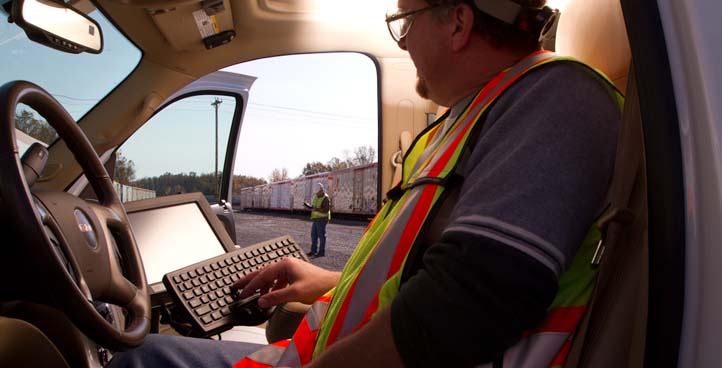
Transform your operations with fit-for-purpose technology
Technology holds the key to streamlining workloads and realizing cost-efficiencies across rail, intermodal, and marine operations. But operations personnel can’t simply be handed a new tool and documentation and be expected to get the most out of it.
They need to be trained and truly understand the value of new technology investments—and to take ownership over their implementation.
That’s where Buckeye Mountain sets itself apart.
“As we are expanding we are hitting more competition,” says Dunnell. “But what we are trying to do, very deliberately, is to do things a little bit differently in the best interest of our customer. We want to expand the role of the operator to make them the custodians of the operationally critical technology tools being deployed.”
It’s time to stop drawing a line between operations and technology. Buckeye Mountain can help bring them together for a seamless fit that streamlines your workflows and maximizes the return on your technology investment.
Contact us today to find out how.
BNSF IMPLEMENTS RAPIDCRANE
BNSF Implements Buckeye Mountain’s RapidCrane to Support Remote Wide-span Crane Operations
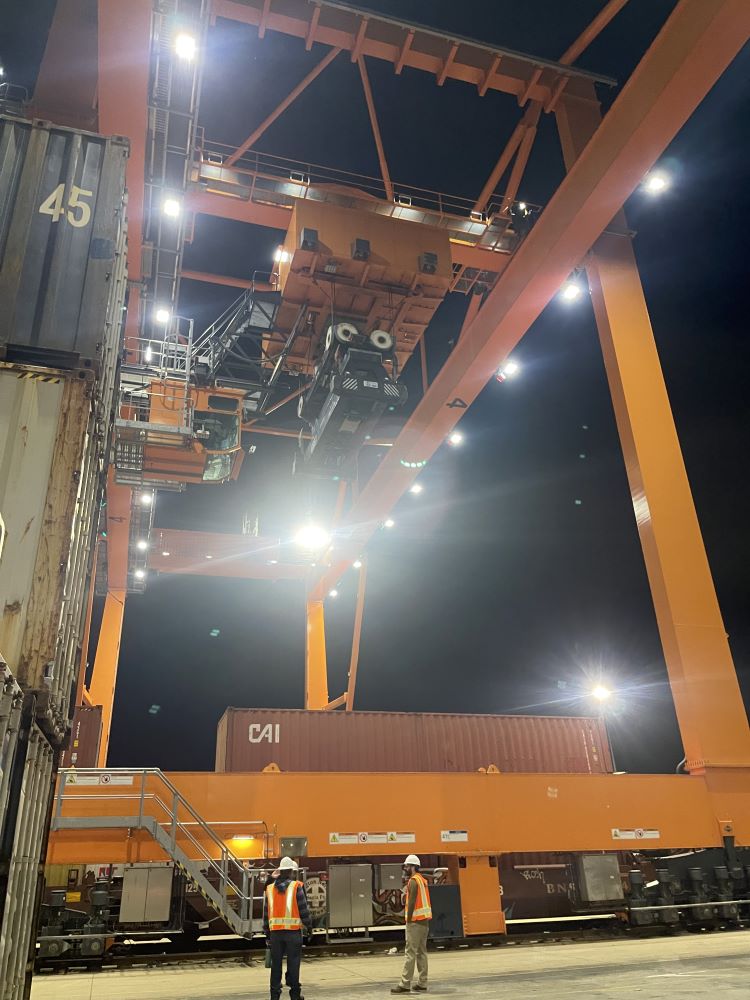
Progressive Railroading: Another wide-span crane first for BNSF: Wireless remote-control operation
Akron, OH, Jan 11, 2024 – BNSF has partnered with Buckeye Mountain to implement a high-speed low latency wireless solution to support critical wide-span crane operations. Buckeye Mountain’s RapidCrane product supports multi-gigabit speeds, redundant paths, and extremely low latency, which is crucial for remote operations. Steve Hill, Director of wireless engineering at Buckeye Mountain, commented: “There are significant technical and environmental challenges to be addressed in implementing a solution that provides the speeds, low latency and maximum jitter requirements for remote crane operations. The implementation of RapidCrane at BNSF has met and exceeded those requirements.”
Caliber Information Systems
Buckeye Mountain Acquires Caliber Information Systems
Akron, OH, Monday, April 18, 2022 – Buckeye Mountain is pleased to announce the acquisition of Caliber Information Systems. Caliber provides technology and field support services for the intermodal transportation industry. “The Buckeye Mountain team is excited about the addition of very knowledgeable intermodal field resources that Caliber provides. They will be an excellent complement to the expanding Buckeye Mountain field operations” said Greg Dunnell, Principal of Buckeye Mountain, Inc. Bruce Childers, Caliber Co-founder and CEO, has led the company for more than a decade. After an extensive career in the transportation industry, Bruce has decided to retire later this month having positioned the company well for continued growth. Upon retirement, Bruce will continue in an advisory role to management. John Gunder will remain as General Manager and Principal of Caliber as it joins the Buckeye Mountain family of companies.

About Caliber Information Systems
Caliber Information Systems was founded in January 2006 and focuses on the intermodal and trucking sectors of the Transportation Industry, specializing in equipment readiness technology and personnel support services. The combination of services and technology to support field operations has made Caliber a valued partner to some of the largest transportation companies in the country.
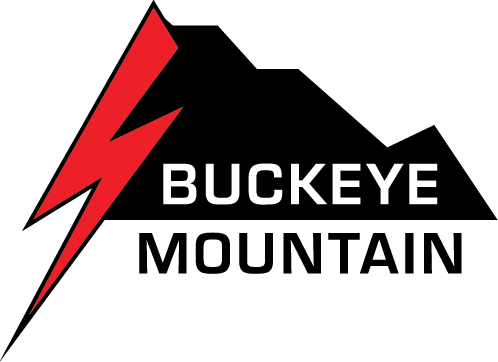
About Buckeye Mountain
Buckeye Mountain is the largest provider of ruggedized mobile technology services and solutions to the railroad and intermodal industries. For over 15 years Buckeye Mountain has been solving the unique field workforce challenges within these industries. Leveraging a diverse team of experienced industry experts and superior service, Buckeye Mountain maximizes technology up-time & ensures customer project success.


